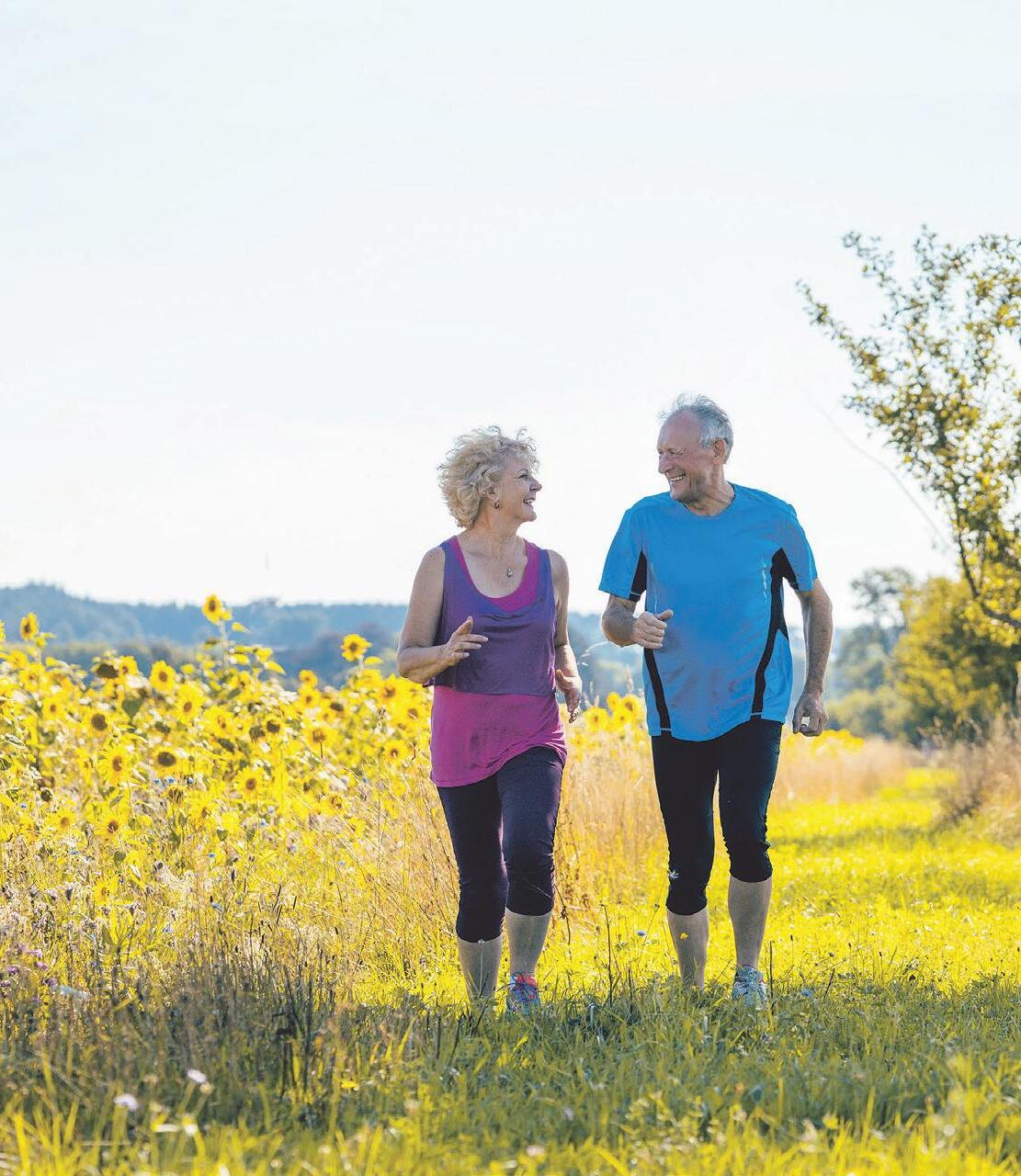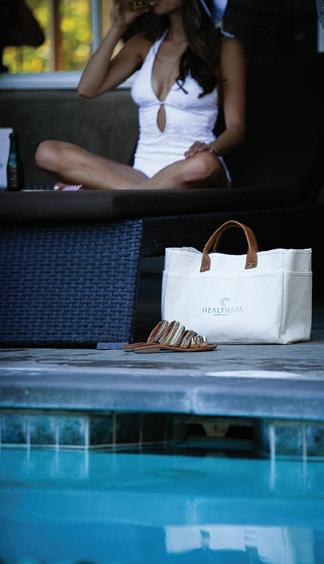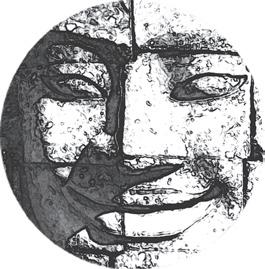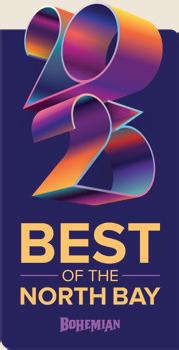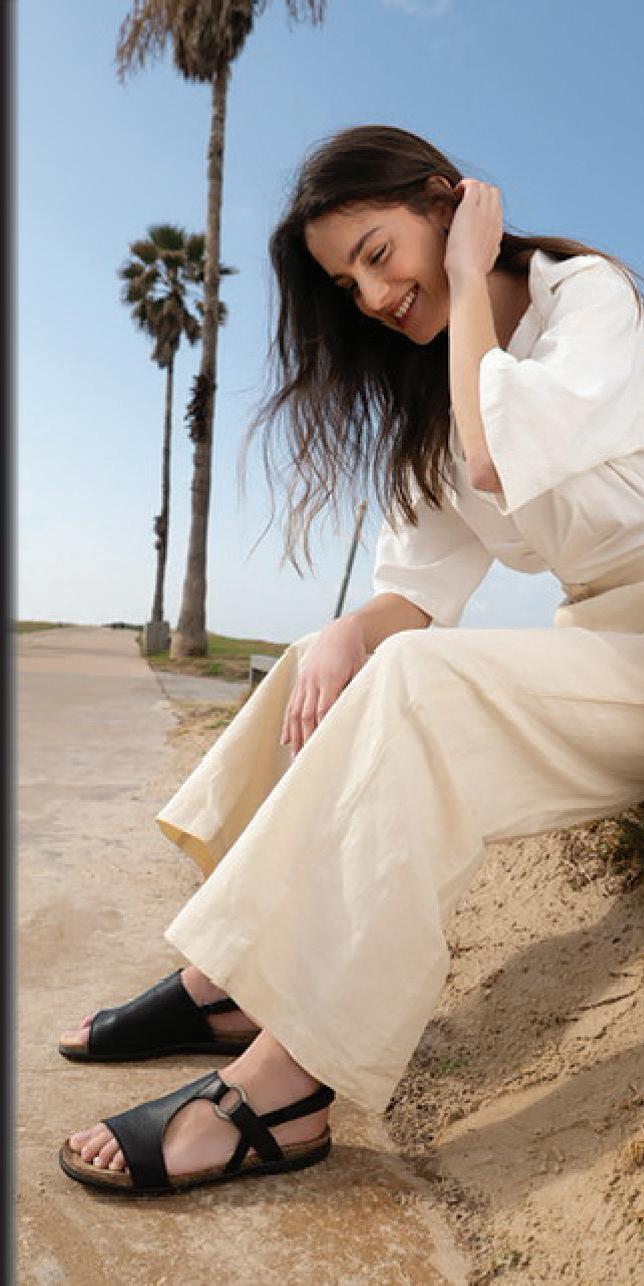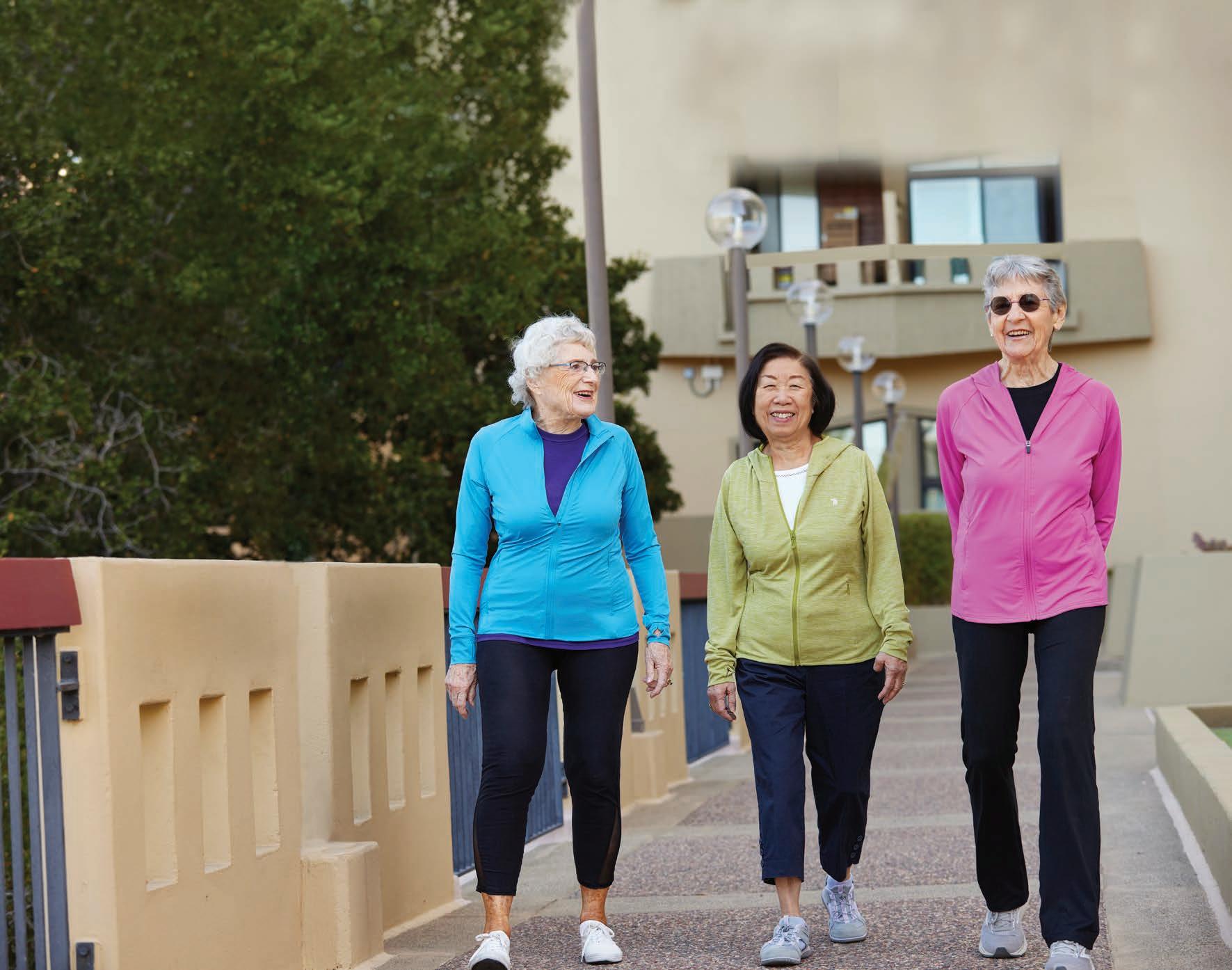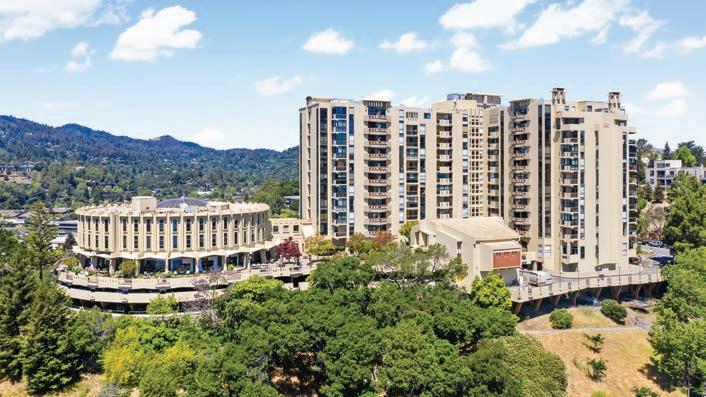
























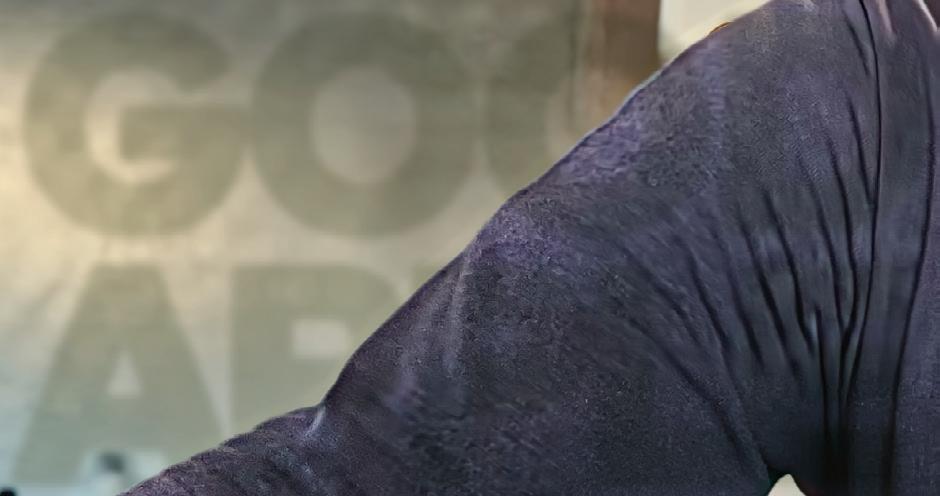

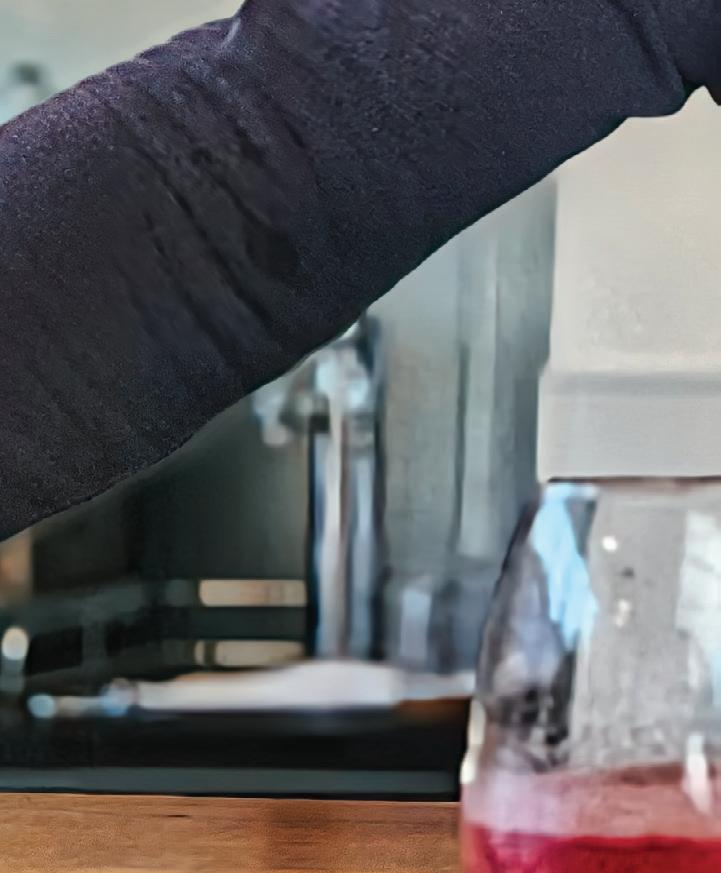

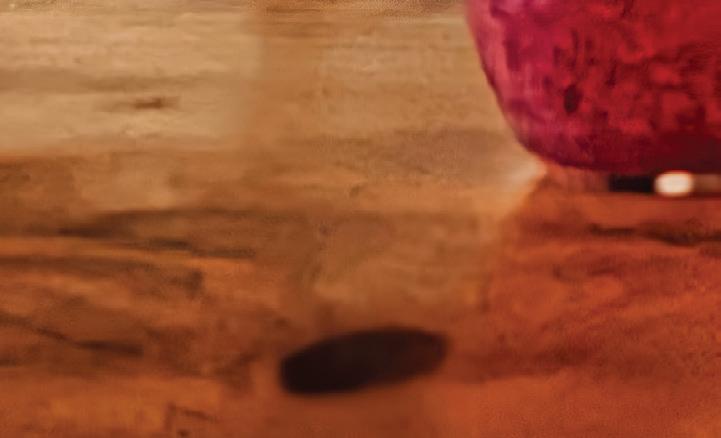

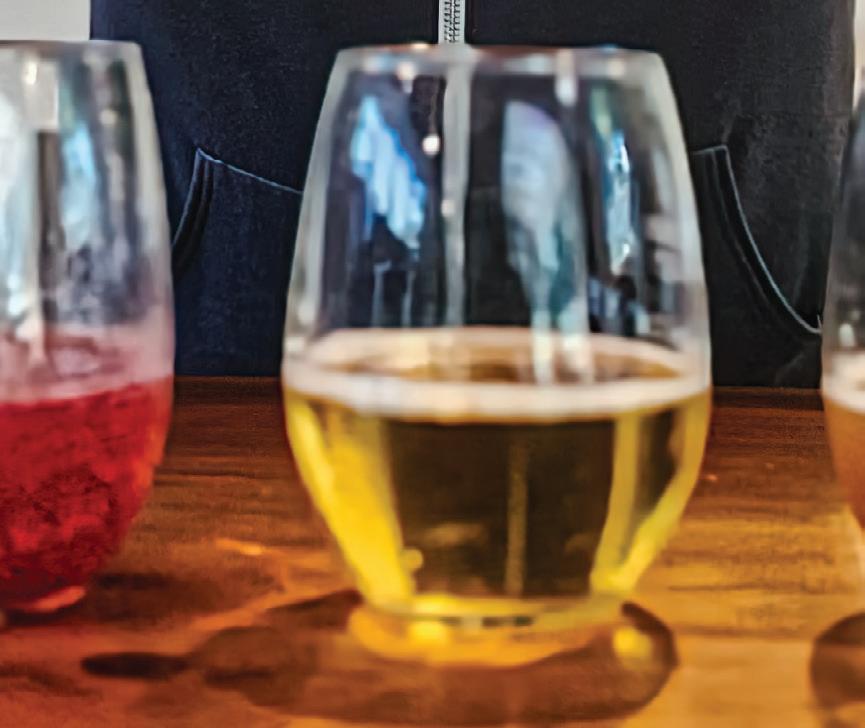



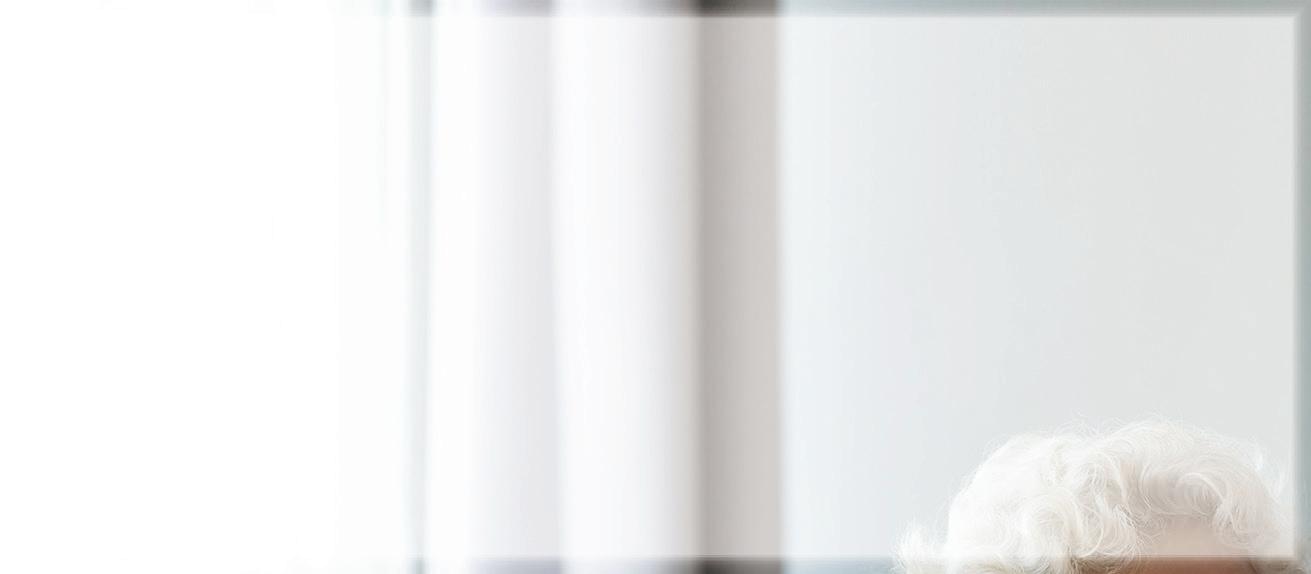

The concept behind The Lodge at Piner Road is to make life both easier and more enjoyable for residents. They will enjoy an independent lifestyle with supportive care available for activities of daily living such as shower assist, dressing and or medication management. Rich amenities range from fresh gourmet meals and housekeeping to laundry services and socializing activities. This facility features a theater, salon, pizza oven dining experience, spa, and outdoor deck experience for memory care.




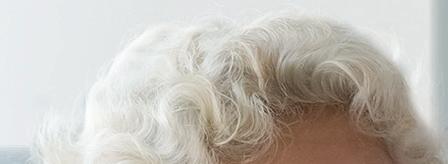





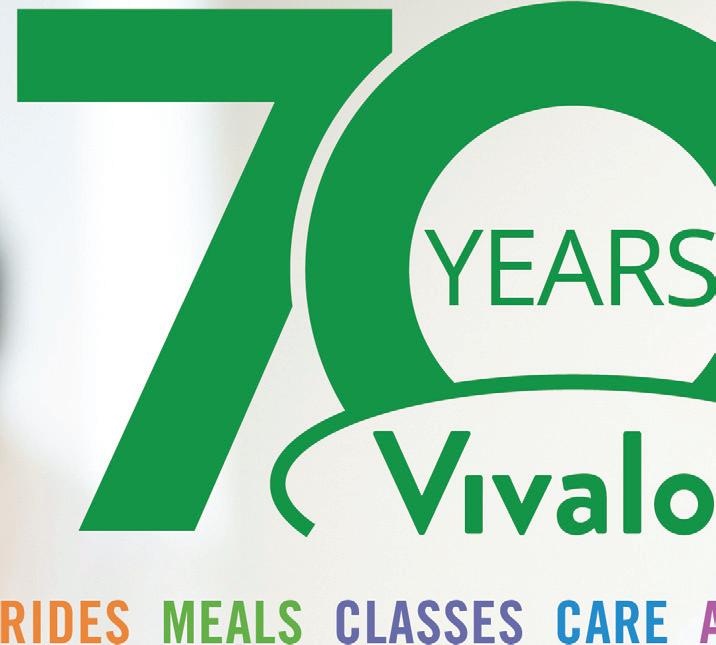




AGED LIKE MILK
A feat of dairy-do 6
SIMPLY PSYCHEDELIC Liminal Medicine 8
BROTHER OUTSIDER


A Bayard Rustin documentary revisited 14
NORTH
JUICED UP
Sebastopol’s Ethic Cider 18
ALONE VS. LONELY Knowing the difference 26
ROCK, STOCK & BARRELS
Sammy Hagar’s liquidity event 32
CEO & EXECUTIVE EDITOR
Dan Pulcrano
PUBLISHER
Rosemary Olson DIRECTOR OF CREATIVE SERVICES
Cindy Couling EDITOR
Daedalus Howell
COPY EDITOR
Suzanne Michel
CONTRIBUTORS
Isabella Cook
Lou Fancher
Aidan McCahill
Jane Vick
CREATIVE SERVICES
PRODUCTION MANAGER
Deb Fisher
PRODUCTION OPERATIONS MANAGER
Zk Bradley
GRAPHIC DESIGNERS
Jennifer Meyer, Jackie Mujica, Elena Razganov, Rowdy Tomkins
EDITORIAL GRAPHIC DESIGNER
Phaedra Strecher
ADVERTISING DIRECTOR
Lisa Marie Santos
OFFICE MANAGER
Liz Alber
ADVERTISING ACCOUNT MANAGERS
Danielle McCoy, Mercedes Murolo, Lynda Rael

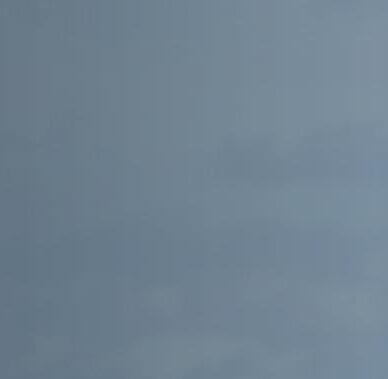
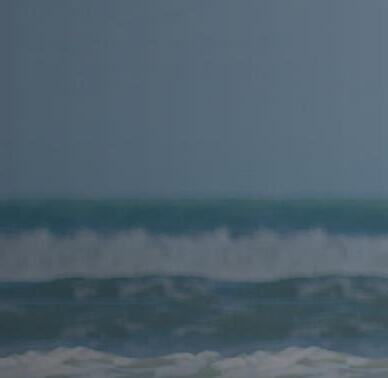


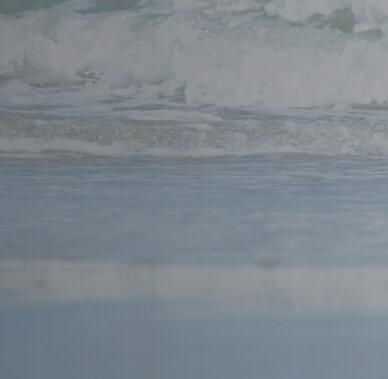
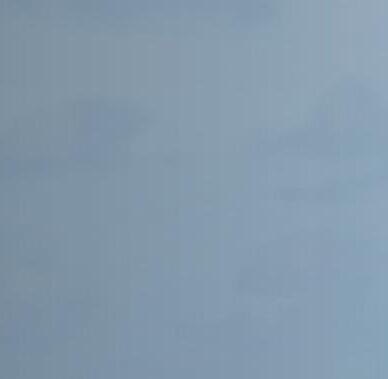
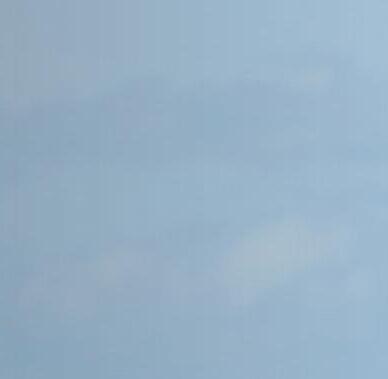
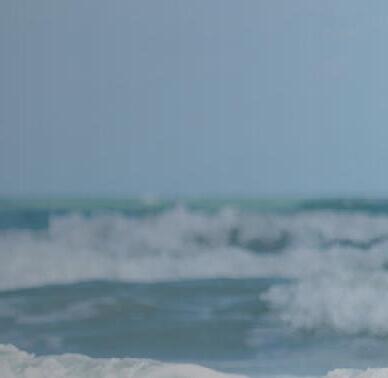

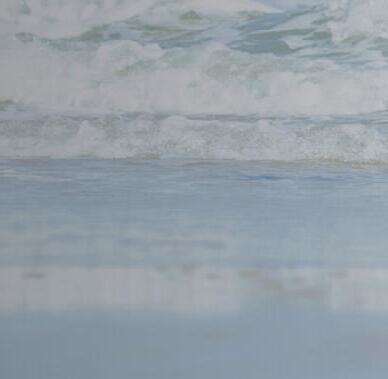
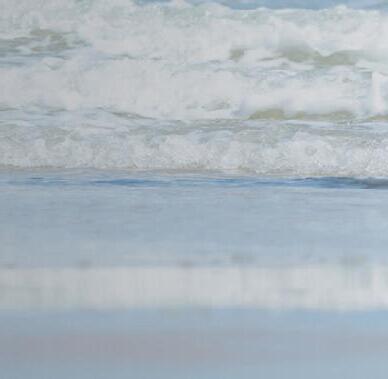
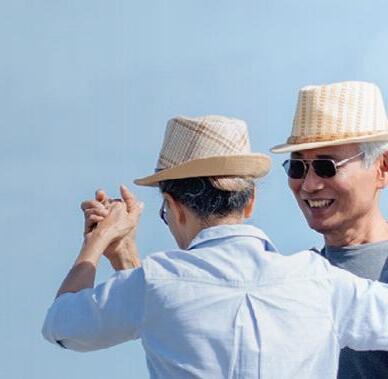
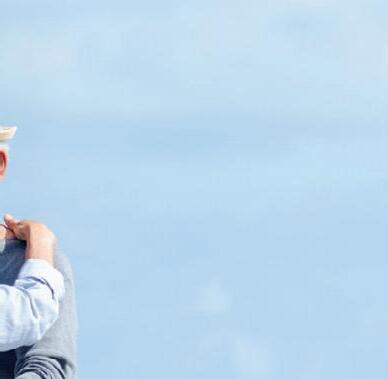

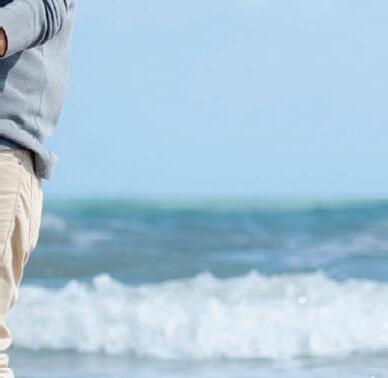

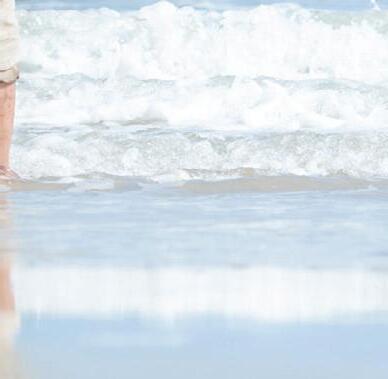
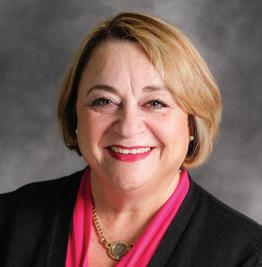
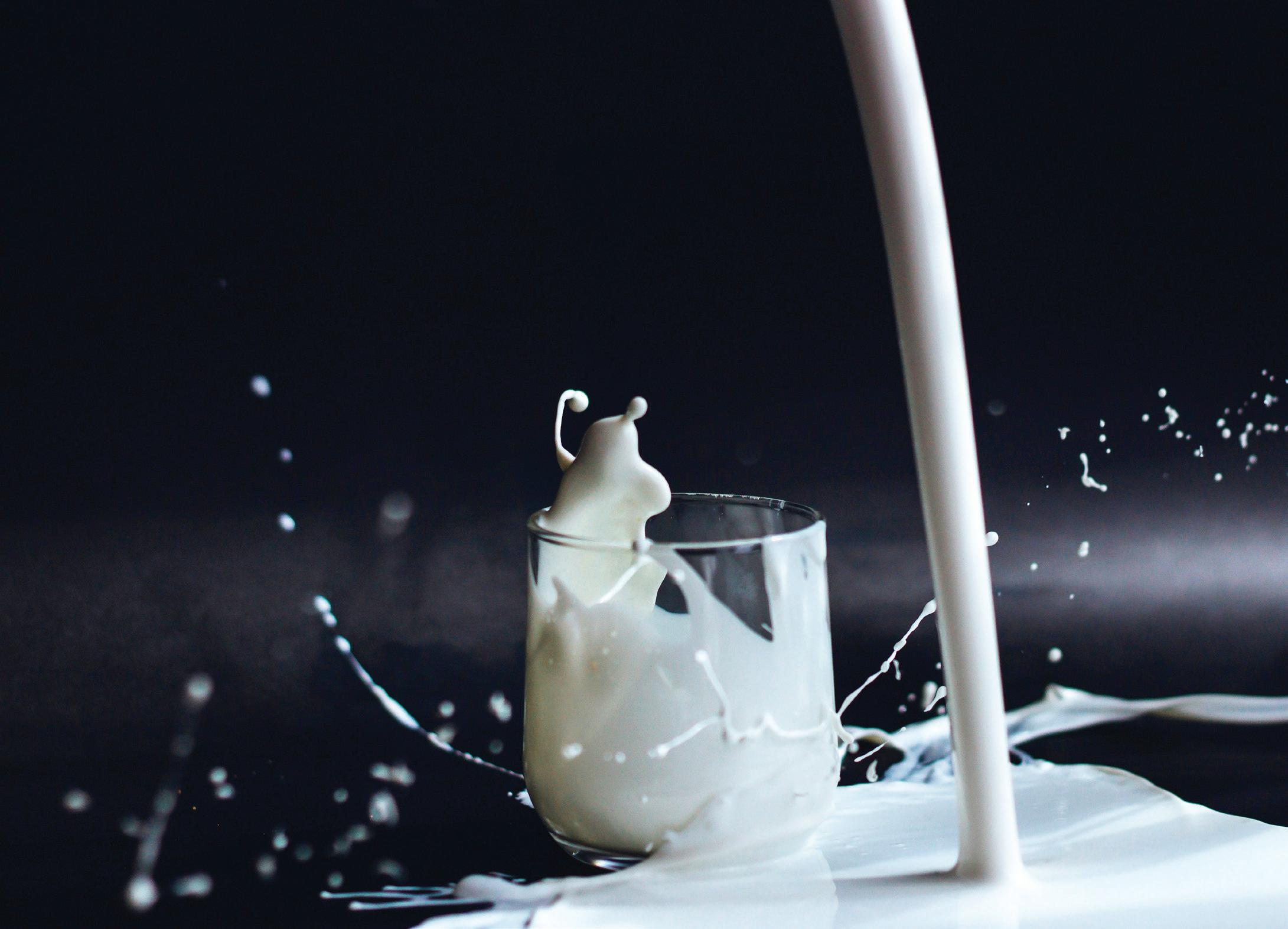
Last January, The New York Times reported that Gen Z thinks it’s “aging like milk.” This was an interesting observation for a generation that, to my weary eyes, seems like it’s barely finished puberty. Never mind that aged milk is technically cheese, which is often better with age—these kids don’t know how good they have it. Also, get off my damn lawn!
Apparently, today’s teens are in the market for “anti-aging serums.” When I was a teenager, I did everything I could to not look like a teenager, lest my youthful mien interfere with my ability to purchase cigarettes and booze. Today’s teens seem less interested in both—in fact, as the Times also reports, they’re not even into milk
(“the dairy industry is going all out to get younger Americans on the milk train”), which is probably why aging like the stuff has a negative connotation.
Of course, the best way to prevent aging, at least according to the popular culture of my forebears, was to be like James Dean: “Live fast, die young, and leave a beautiful corpse” (which he notably did not). Then there was The Who’s boomer anthem that pleaded, ”Hope I die before I get old.”
If you’re a boomer reading this, it’s already too late—the song itself turns 60 next year. Sixty, incidentally, is also the age on the outer reaches of Generation X, my cohort, who never worried about aging since we were promised thermonuclear devastation by the end of the 1980s. Thanks for nothing—the only “boom” we got was you guys as parents.
What we do have, however, is an abiding sense that the best years are yet to come (can’t get much worse) and that bemoaning aging is like, well, to quote from my ancestor James Howell’s 1659 opus, Paroimiographia, “weeping for shed milk.”
That sentiment is echoed by the interesting artists, healers, makers and thinkers who make up the substance of this issue—each one meeting the next phases of their lives with hard-won knowledge and a passion for sharing it. To put it plainly, when you’re doing something cool, you’re ipso facto aging well.
So, go ahead and age like milk. If you’re lucky, you may end up like the 3,300-yearold cheese researchers excavated from the tomb of Ptahmes of Ancient Egypt—a bit sharp, but historically relevant nonetheless.
Daedalus Howell, Editor PHOTO BY ANITA JANKOVIC























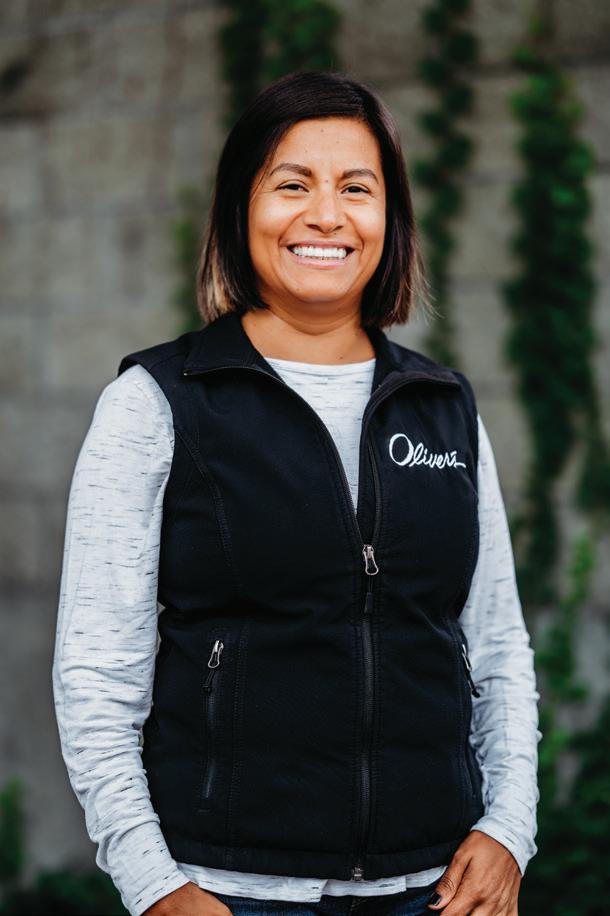
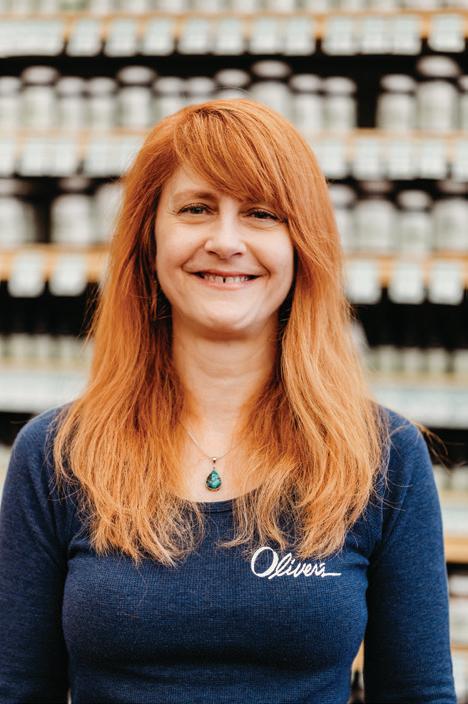

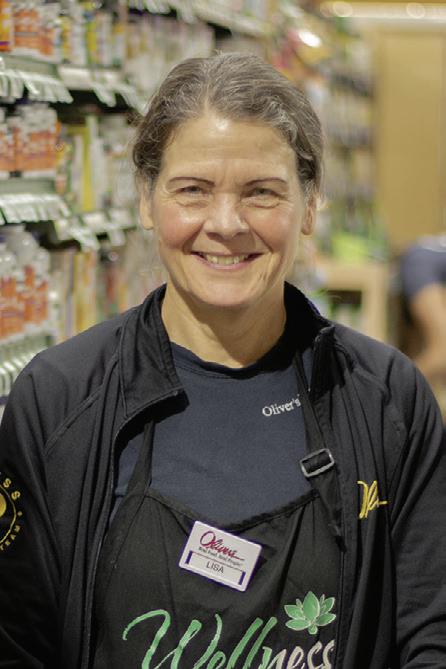

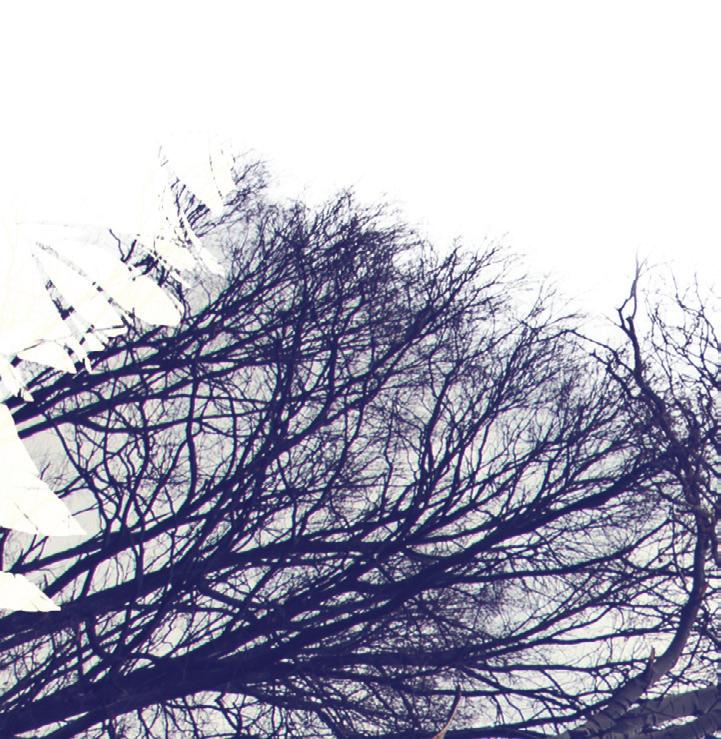
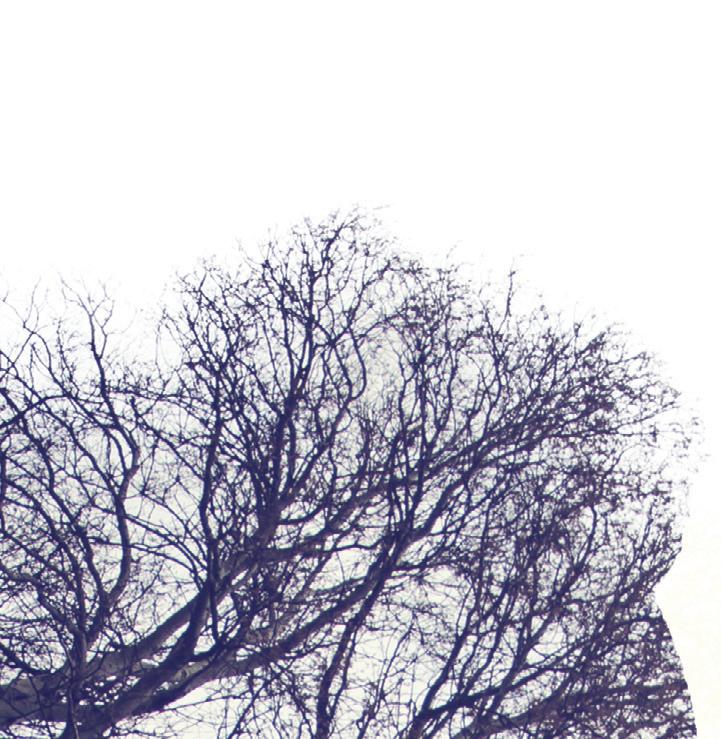
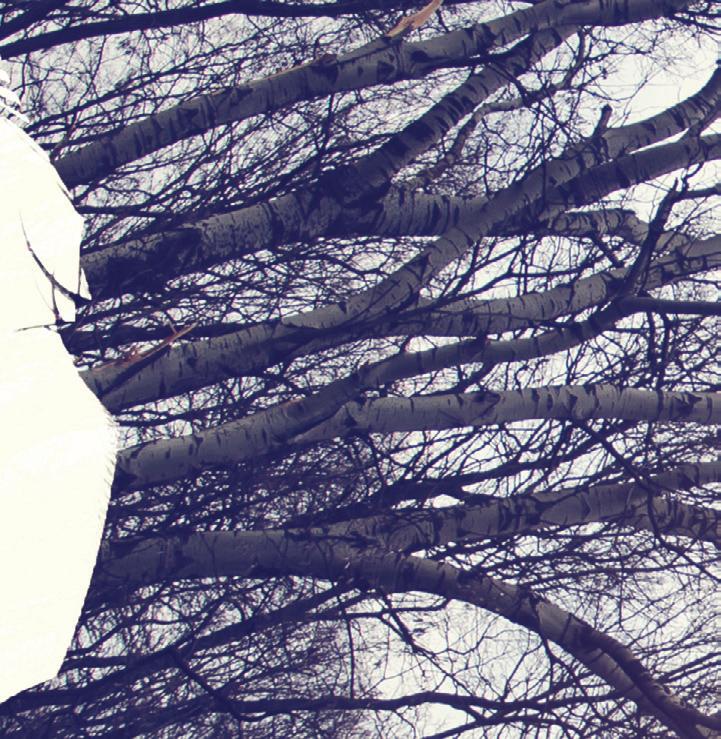
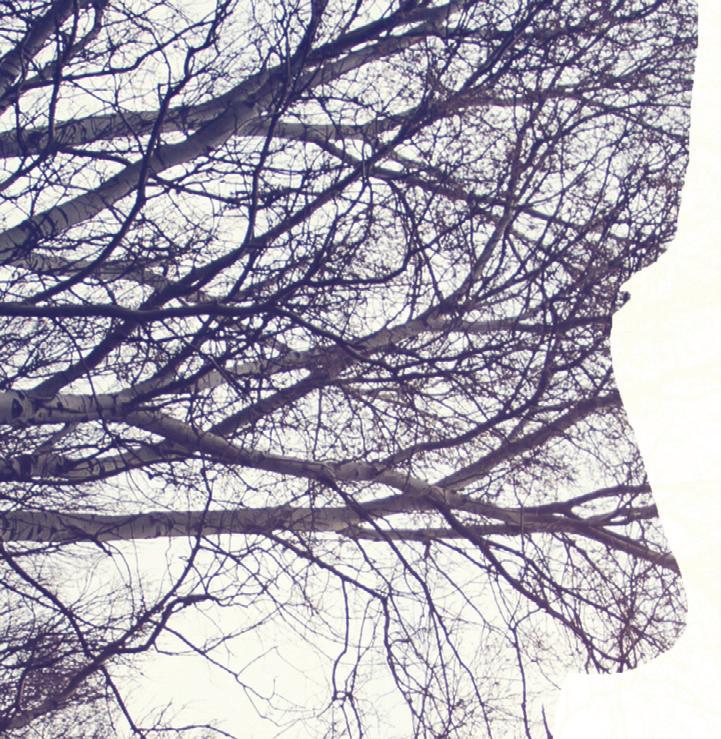
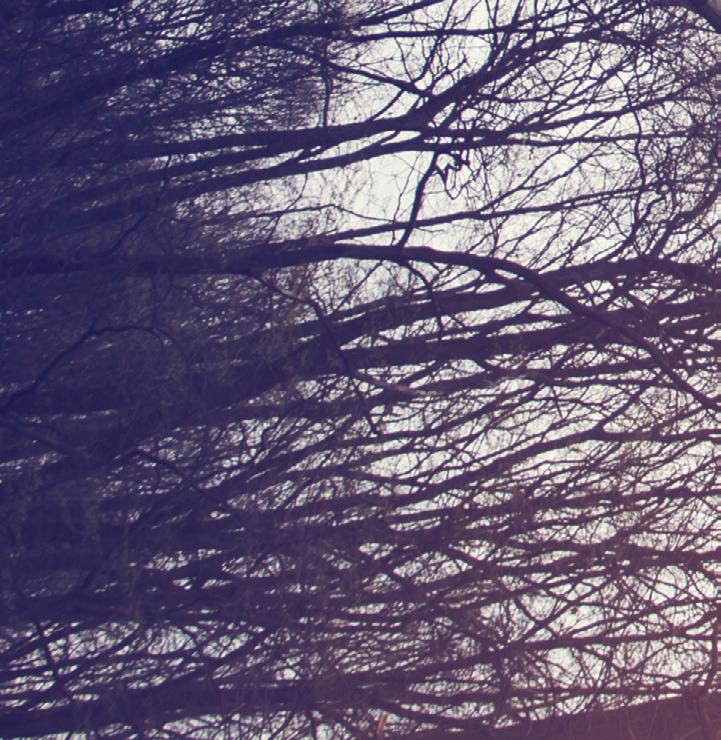
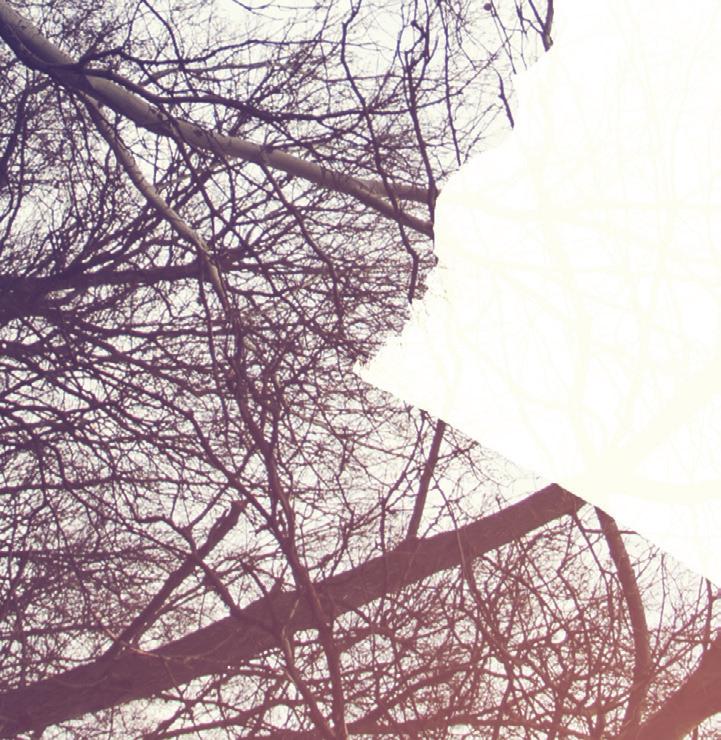




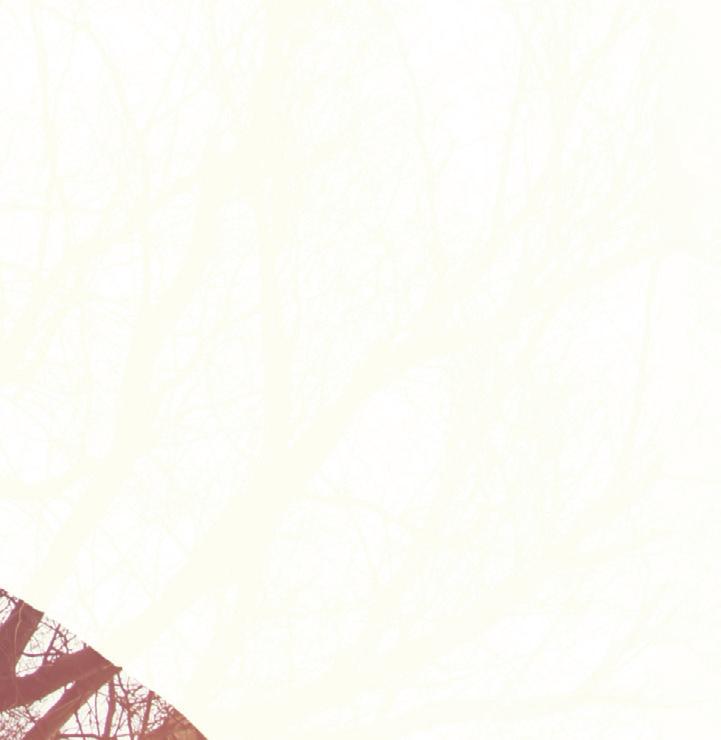
Sebastopol’s Liminal Medicine
BY ISABELLA COOK




Until quite recently, mental health was a bit of a mystery—one which only escaped its oppressive societal stigmatization well after the turn of the century.
Although the concept of mental health and some of its treatments are still somewhat new, the advancements made in the past decade alone have already helped people of all ages to work toward a peace of mind that allows them to live happy, healthy lives free of depression, anxiety, PTSD and more.
In the North Bay, one woman-owned and operated therapeutic establishment called Liminal Medicine is offering locals a chance to address mental health struggles with, surprisingly, psychedelics. To be more specific, Liminal Medicine is treating mental health disorders with Ketamine, and to compelling results, especially with over half of the clients at this practice being over the age of 55, with many being over the age of 65.

But how does taking a psychedelic drug help fix mental health issues? Well, consider for a moment this popular extended metaphor mental health professionals use to explain the premise:
Picture a snow globe filled with faux snowflakes that, when still, appear to be nothing more or less than a settled blanket of white. Much like the mind, these snowy landscapes keep track of the individual footprints, thoughts and then their patterns, which, with time, become established paths.
Poets like Robert Frost may encourage readers to take the road less traveled, but




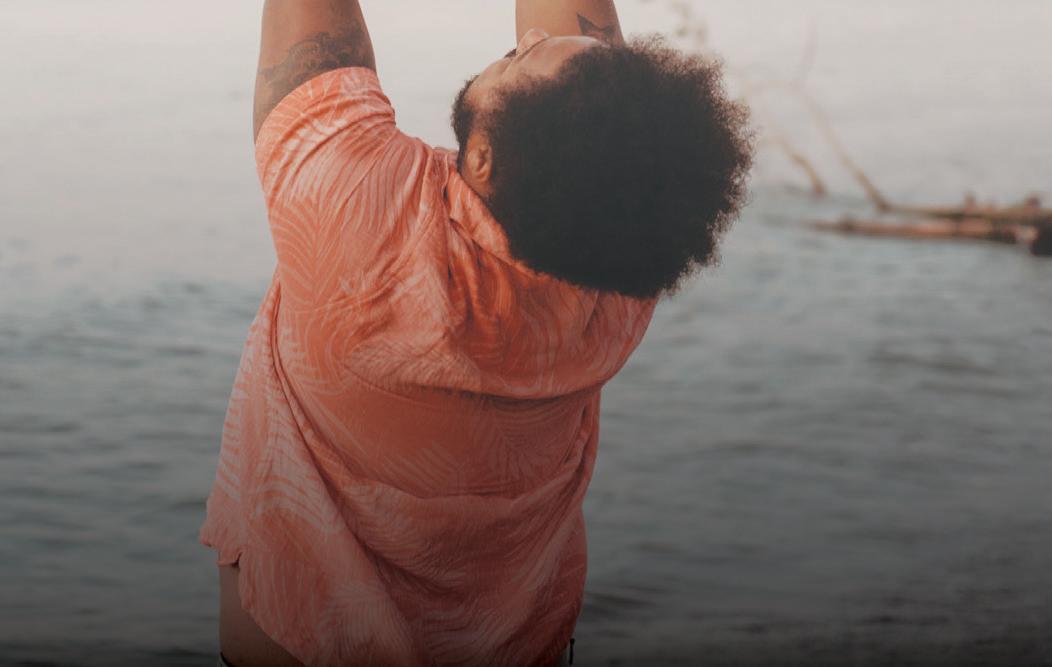



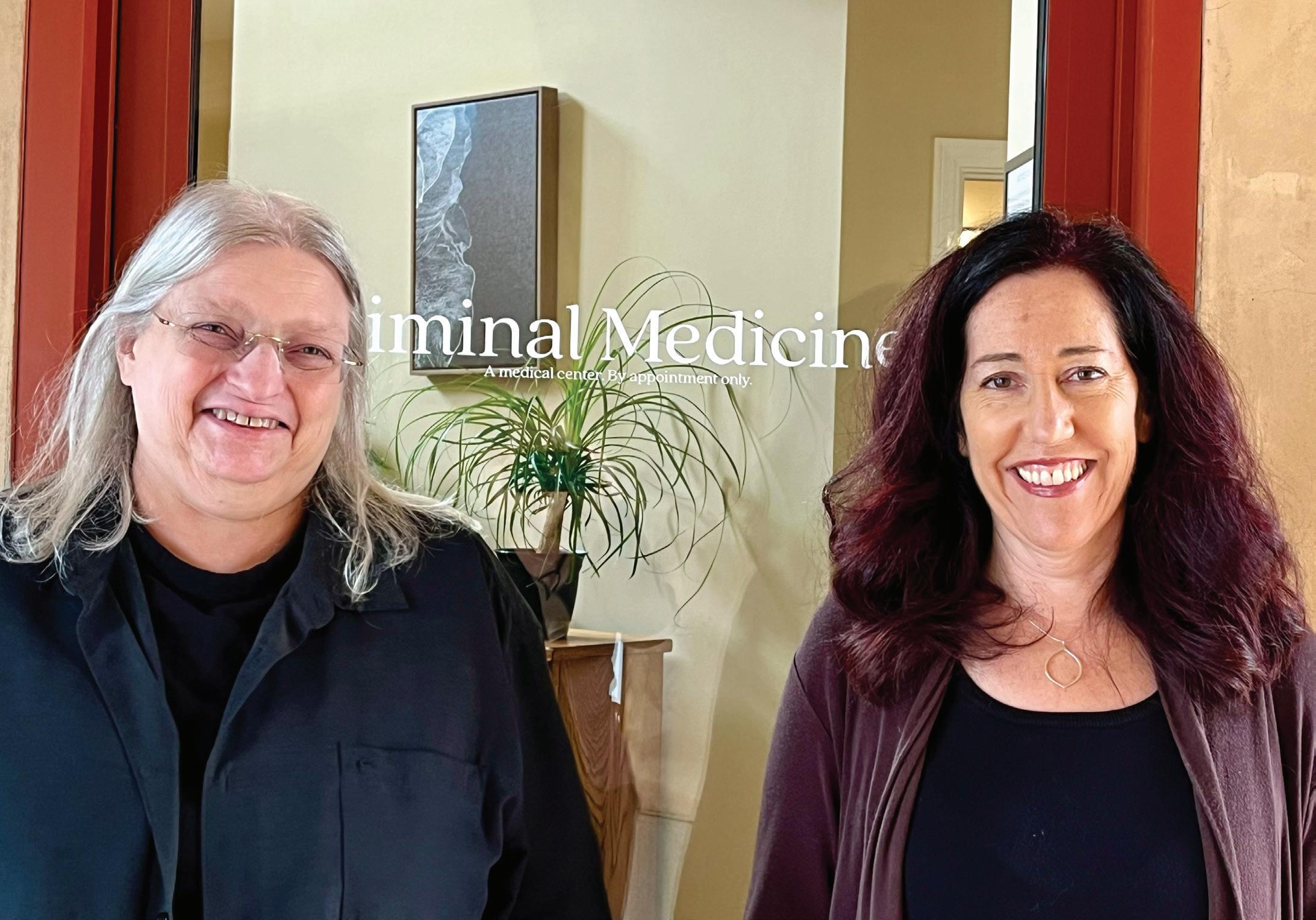
this option becomes obsolete when the path grows deeper and the snowbank higher—in some cases, too high to climb out of without help. The same principle applies to people’s thought patterns and the depression, anxiety and other disorders paved into their brains.
“The concept of the snowglobe effect is an analogy we use in the world of psychedelic medicine,” explained medical director of Liminal Medicine, Suegee Tamar-Mattis, D.O. “If you think about your brain as a big snowy field and you’re making paths, going the same way every day, making these deep deep pathways. And if the snow is five feet high, it's so easy to follow the same path instead of forging a new one.”
“Psychedelics shake it up like a snow globe, and suddenly, you have a new
field of fresh snow to walk on,” continued Tamar-Mattis. “And with the help of psychotherapy, you can start to make new, healthier pathways instead.”
Ketamine has been used by medical professionals since the ’60s and is a common anesthetic for both adults and children undergoing minor and major surgeries. Institutes such as Liminal Medicine are currently exploring the psychedelic properties of Ketamine and its qualities as a rapid antidepressant. The preliminary findings being observed in these facilities are, apparently, quite encouraging, especially given the professionally administered Ketamine treatments paired with therapeutic practices.
According to Liminal Medicine’s staff, another appealing aspect of Ketamine is its ability to work even with patients who are
already taking selective serotonin reuptake inhibitors, or SSRIs, an incredibly common genre of medication prescribed to people struggling with their mental health. This is unusual, as many psychedelics do not respond as well in those already taking SSRIs.
“This treatment works because [Ketamine], it kind of relaxes the amygdala [the part of the brain thought to be responsible for fear response] and other natural defenses, and it lets us see things from a non-triggered space,” explained lead therapist and clinical director at Liminal Medicine, Celeste Monnette, LCSW.
“Discussing a traumatic event can be difficult for our brain’s capacity for clarity.”
“I often talk about Ketamine as the kindest of all psychedelics,” said TamarMattis. “One of the things it does first is it »»
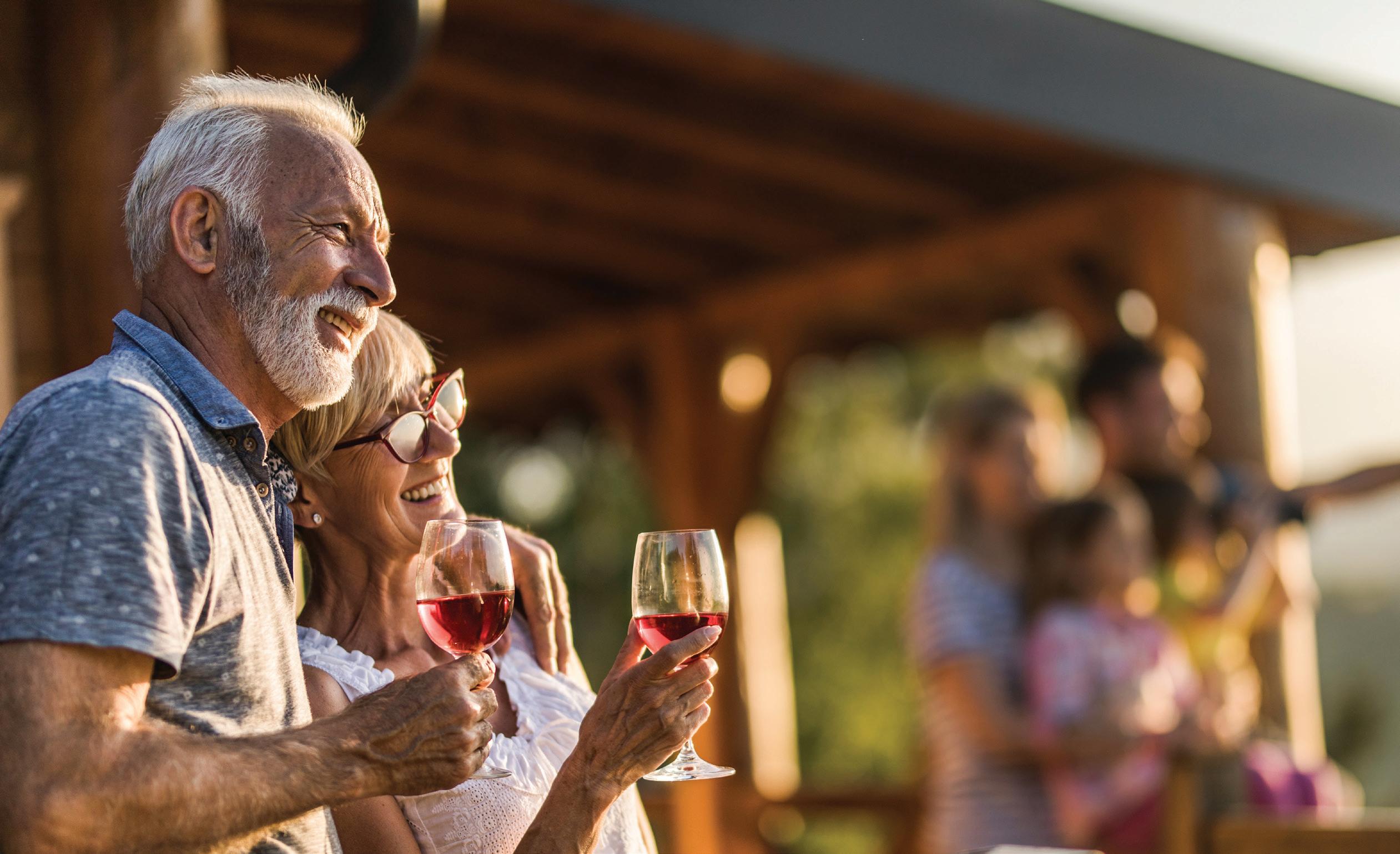
Tucked in the hills of Marin County with close proximity to beautiful open space preserves and parks, Drake Terrace is a warm and friendly senior living community with an intimate village feeling. Our residents’ lives are vibrant, fulfilling and as active and carefree as they desire. We offer Independent Living, Assisted Living and Memory Care in a friendly environment where our residents and associates enjoy being served and serving others. Our caring team of associates will customize a care program that’s right for you while you continue to enjoy your friends, hobbies, and new opportunities. Surrounded by beautiful, lush trees and filled with the comforts of a modern resort, our community immediately feels like home, full of down-to-earth residents and truly compassionate associates that tailor services to anticipate their needs and enrich their lives.
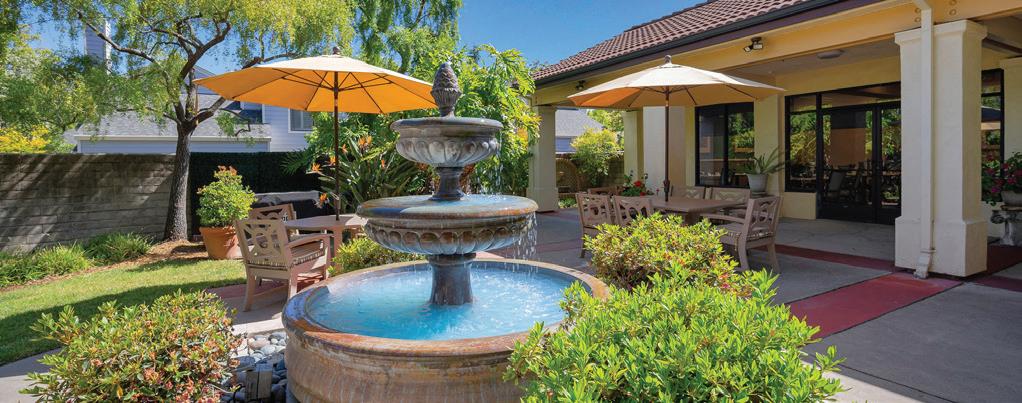
In the North Bay, one woman-owned and operated therapeutic establishment is offering locals a chance to address mental health struggles with psychedelics.
decreases the activity in the amygdala, which decreases fear and anxiety symptoms so that you can have these therapeutic experiences without the fear.
“This lets you go and revisit and repack some traumatic events without the fight or flight that comes with it, which can be really useful for people with PTSD, who are stuck feeling the trauma and adrenaline and want to run but often can’t—that’s what makes PTSD such a recurrent issue because those memories are still there, and so is that physical response. So, we want to see if we can remove that physical response from the memory,” Tamar-Mattis continued.
The fight, flight or fawn responses many people experience when the mind feels fear in the face of a threat, perceived or otherwise, stems from the trauma responses and neural pathways built up in the brain. In line with the snowglobe metaphor, these pathways are enforced and reinforced by the frequency with which one follows them. But Ketamine treatments can break the cycle and allow patients to start anew.
“I worked with a client who had really severe early childhood trauma,” Monnette said. “And through her Ketamine experience, she was able to go back to these specific times she remembers and, because she was in an altered space, she was able to look at the experience she had as a young child…from a more adult, nontriggered space, and through this was able to internalize, understand what happened, know how not OK it was and see how her trauma was not her fault, versus her fouryear-old self, who thought it was her fault and felt shame for it.”
“From this different vantage point, [our client] was able to look at it in a healing way because she was able to orient herself to these memories through a very different lens,” continued Monnette. “If I just said to her, ‘It wasn’t your fault; you were a kid,’ then it may not really sink in, but through her process, it became part of her lived internal experience. This is the same as a lot of stories.”
Liminal Medicine has seen incredible results in its clients: suicidal tendencies set aside in a matter of a few treatments and
people old and young taking back their lives in ways they didn’t know were possible—at least without the medically administered psychedelic treatments offered at Liminal Medicine.
“Seeing the extraordinarily fast changes these medications can make in people’s lives is amazing,” said Liminal Medicine's administrative director, Anne TamarMattis. “We’ve had patients come in so depressed they can barely speak, then three weeks later, they’ll be coming in with a smile on their face, talking about something they’ve started doing that they’re just so excited about. It’s amazing, the way I’ve seen people’s lives improve—that’s what inspires me the most about what we’re doing here [at Liminal Medicine].”
Liminal Medicine is proud to be a safe space for the LGBTQI+ community, though all are welcome to come and seek treatment. For more information about Liminal Medicine and the psychedelic treatment options available through the healing center, call 707.861.0807, email info@liminal-med.com or visit the website at liminal-med.com.
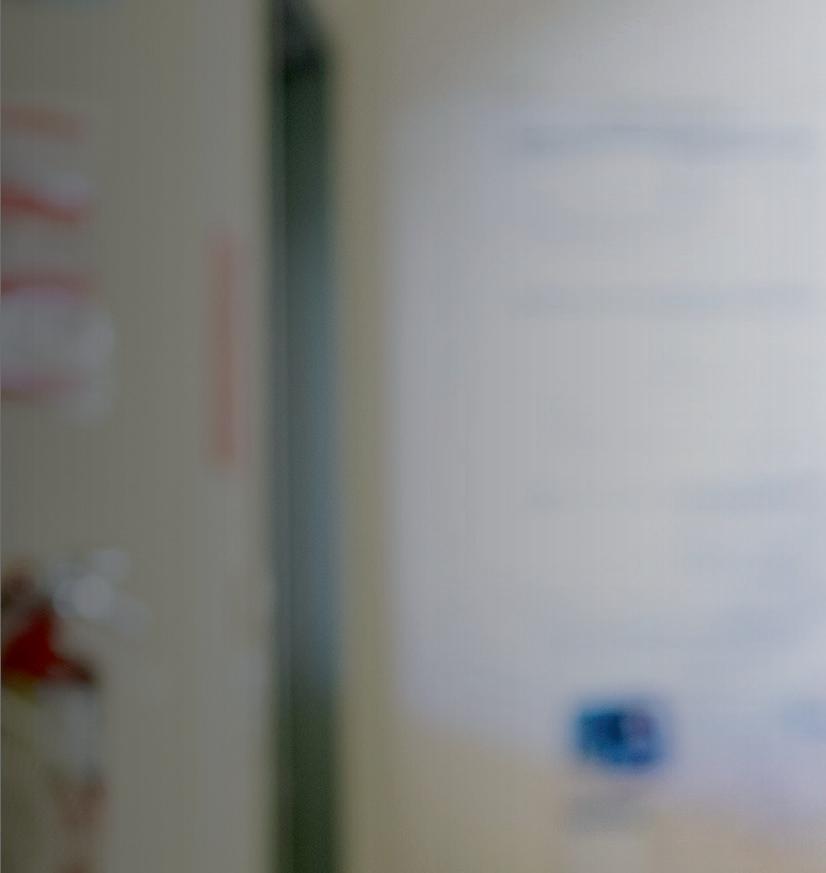
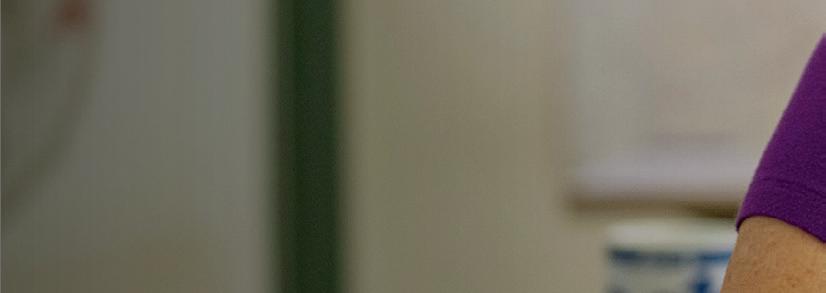
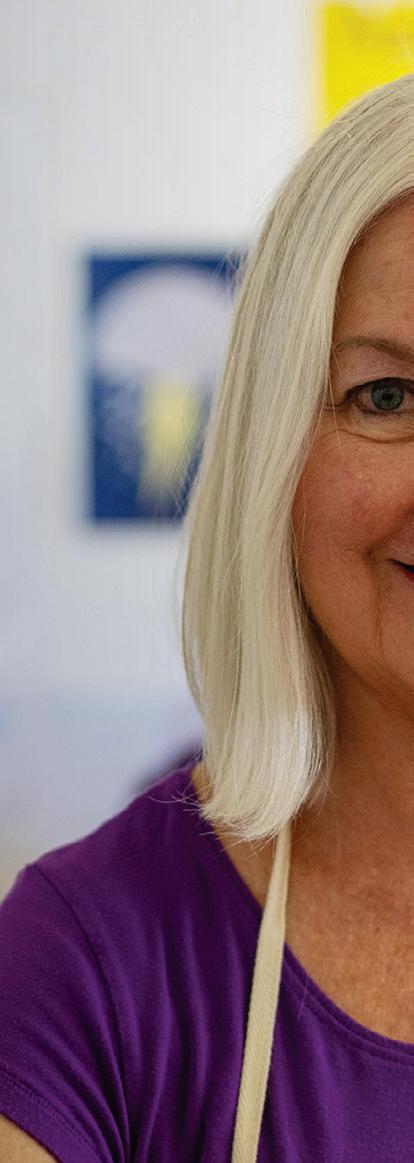
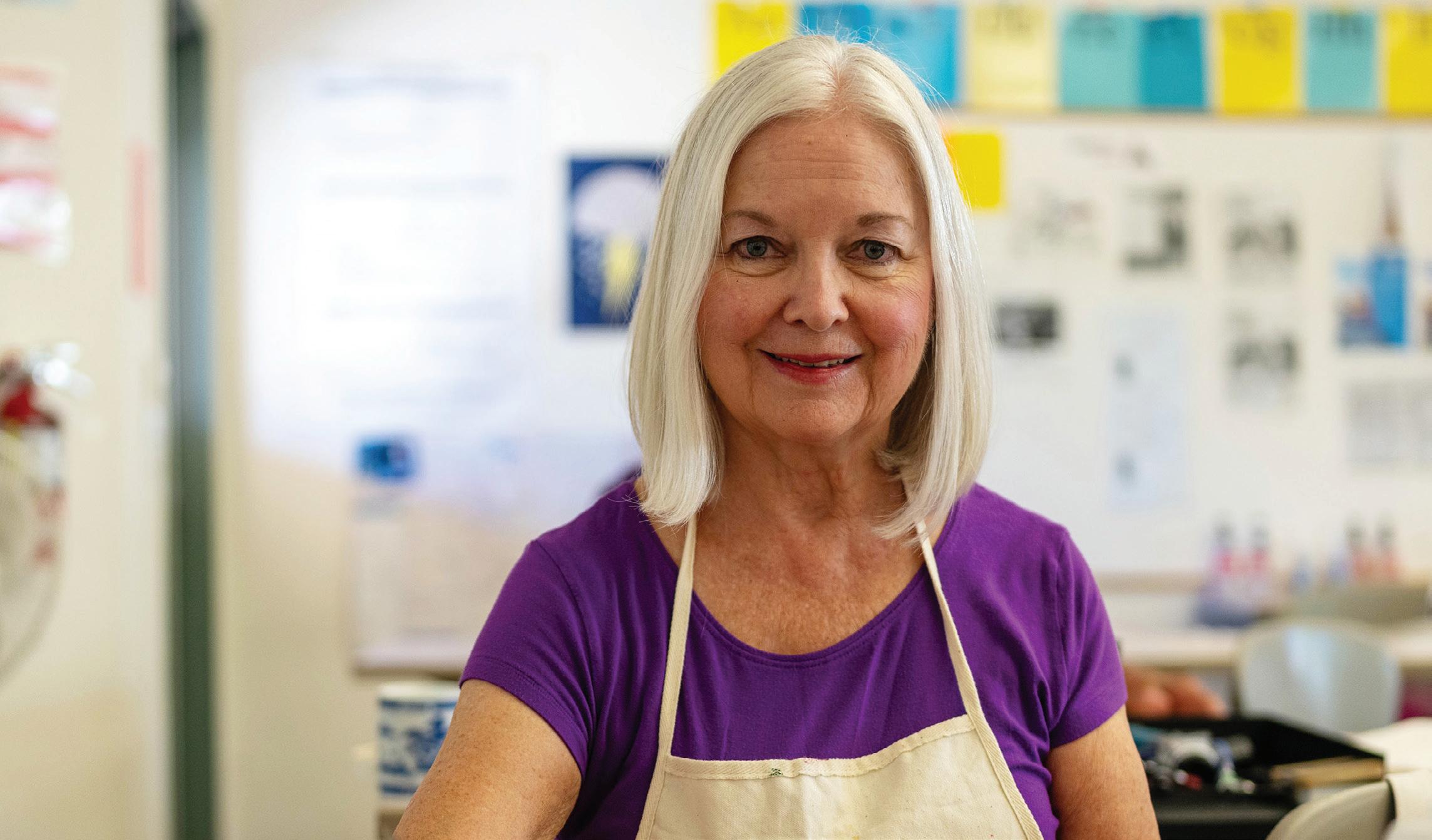

There
alone!
Redwood
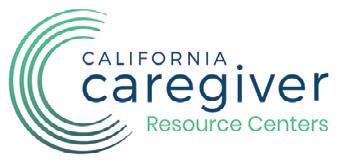

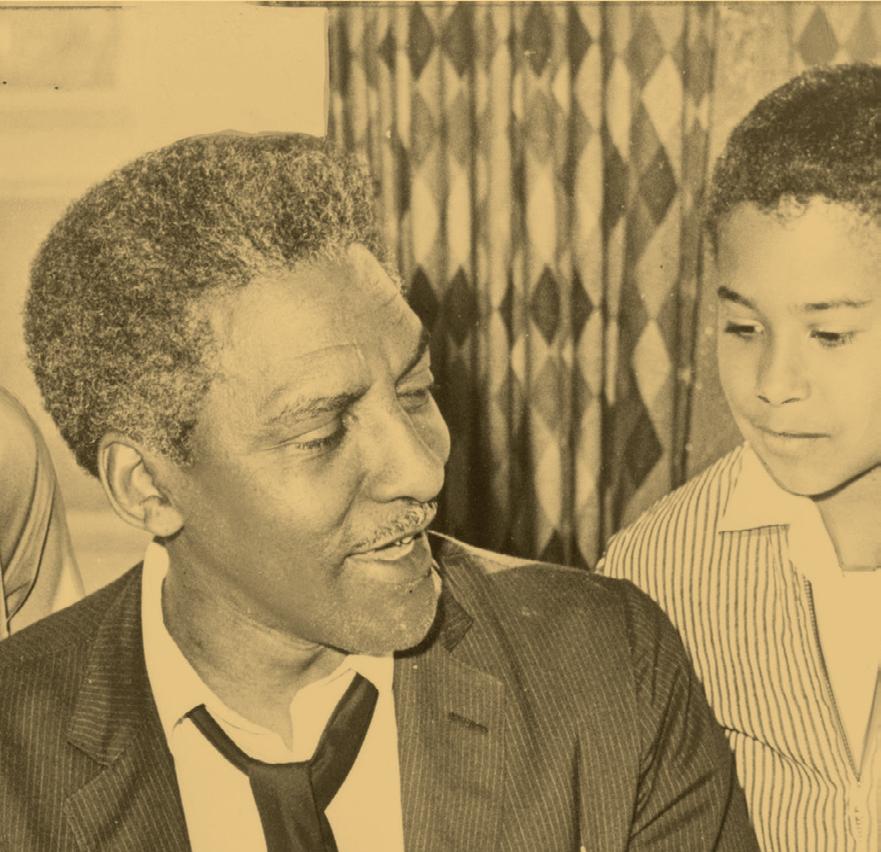
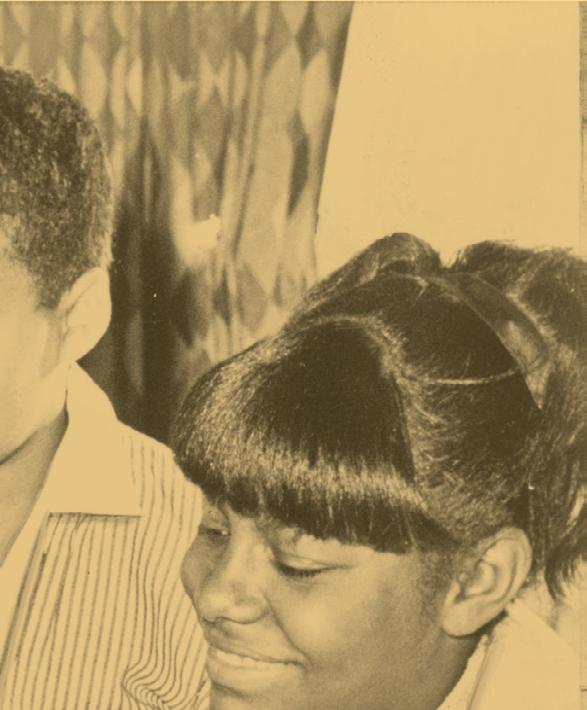
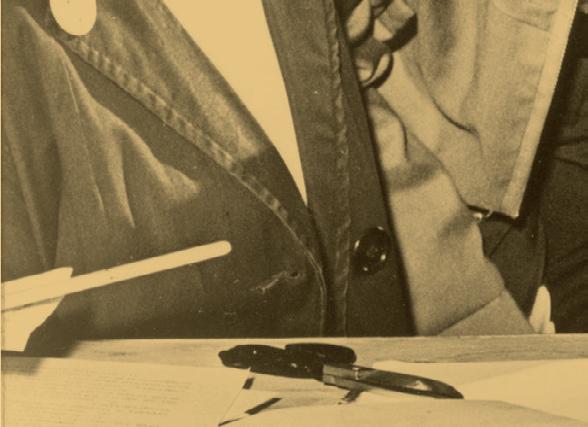



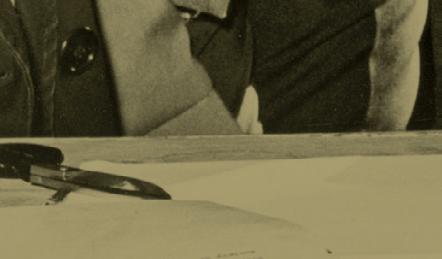

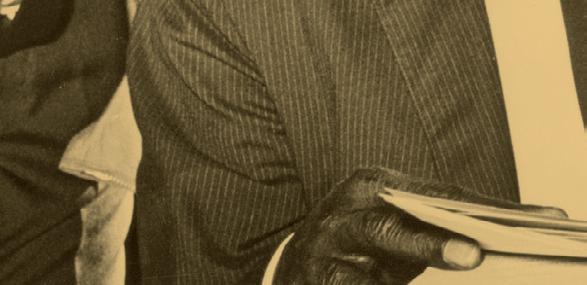
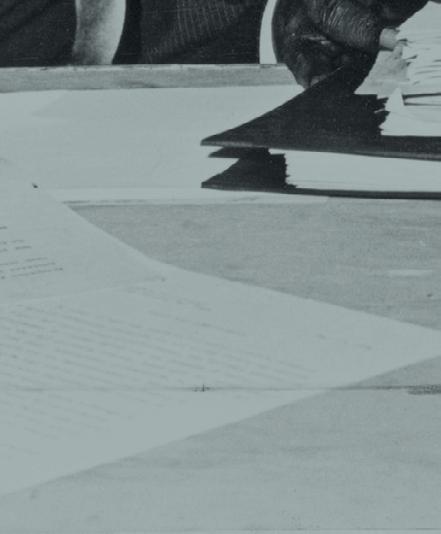
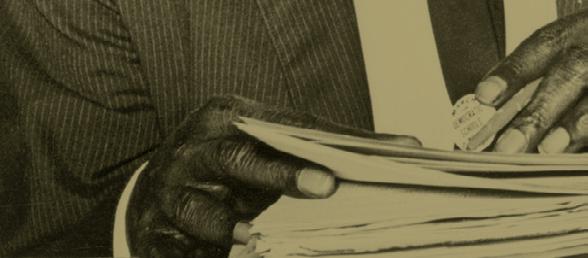
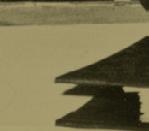

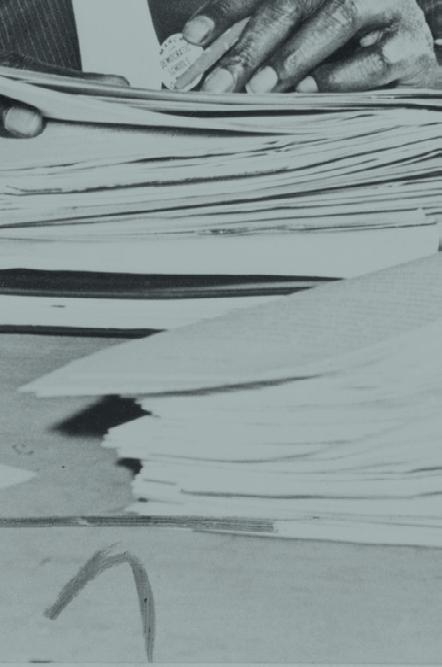
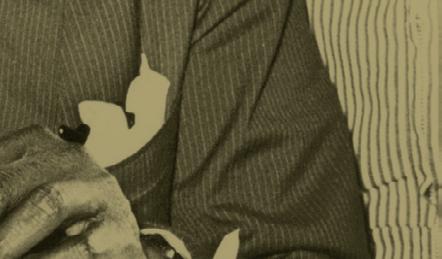



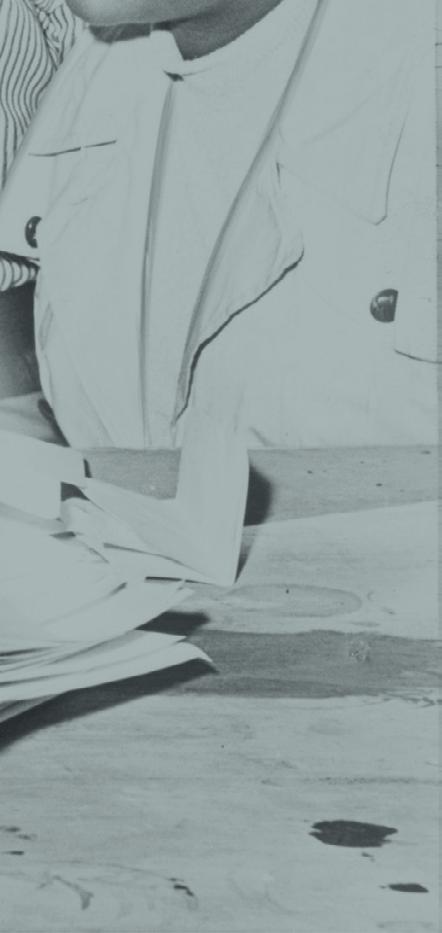
Our interview found Nancy Kates in a book-lined study with a fireplace, tall lamps and several wandering cats.
“My assistants,” said Kates. “They’re invaluable.”
A 20-year-old documentary predates Netflix’s
In light of the recent Netflix release of Rustin—a film based on the life of openly gay African American activist Bayard Rustin, who advised Dr. Martin Luther King Jr. and created the route for the March on Washington—Kates and I met
to discuss her body of work, including a documentary about Rustin she released in 2003. (To note, none of the filmmakers involved on the Rustin film reached out to Kates before using her research nor credited her in the making of the film.







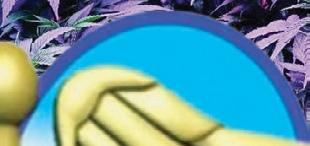



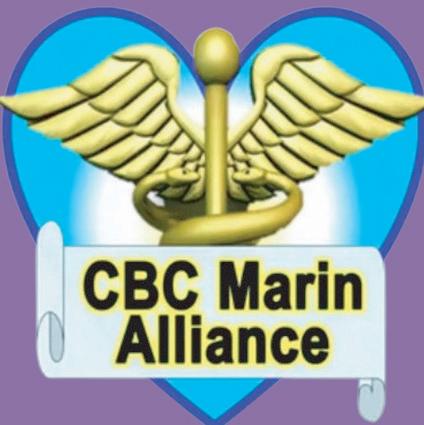







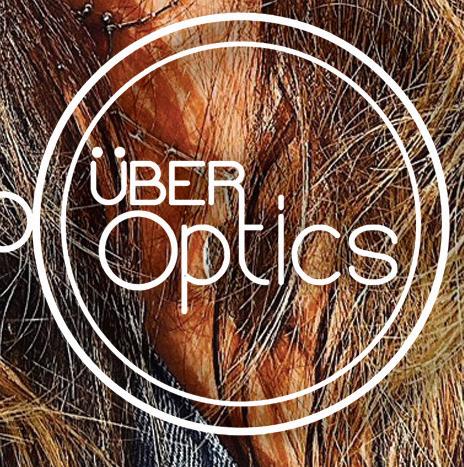
Nancy Kates’ work is intuitive, something that has to feel right, because her documentaries take years to make and are labors of love.
««
She declined to comment, though her publicist called it “sidestepping giving credit to independent pioneers.”)
Brother Outsider: The Life of Bayard Rustin, co-produced with Bennett Singer, tells the story of a dedicated civil rights activist whose story has been largely lost in the tides of history because of his homosexuality, though he fought diligently against racism for over 40 years until he died in 1987.
Premiering at the 2023 Sundance Festival, Brother Outsider received many awards, including the 2004 GLAAD Media Award and an award for best feature film at New York’s New Festival. The film is largely comprised of archival footage and photography of Rustin’s life, including footage of him with Malcolm X, Mahatma Gandhi, Lyndon Johnson and Stokely Carmichael. Kates and Singer also procured two albums Rustin recorded to use as background in the film and tapped phone records from FBI files that his partner, Walter Naegle, shared with them.
It was a labor of love, resulting in a posthumous appreciation and awareness of Rustin's previously shadowed life.
“Obama awarded him a posthumous Medal of Freedom in 2013. Walter Naegle, Rustin’s partner, believed that it was because of our film,” said Kates, though she shied away from taking credit for the turn of events. “I don’t know if it was a direct one-to-one ratio, but we did bring a lot of attention to his work and his life.”
Kates is a documentarian and independent filmmaker now based in San Francisco, though she originally hails from Lexington, Massachusetts, where the first battle of the American Revolution was fought (a fact that may have shaped her love of and passion for history) and is a graduate of Harvard University (a fact she’s rather shy about).
Along with Brother Outsider: The Life of Bayard Rustin, Kates is the producer and director of Regarding Susan Sontag, which premiered at the Tribeca Film Festival in 2014 and won more than 25 awards worldwide.
During her graduate work at Stanford University, she produced a student film called Our Vietnam, which told the story of five women who served in the war, including one couple who met there. The film screened at the Sundance Film Festival, South by Southwest Film Festival, the Boston International Festival of Women’s Cinema and the Minneapolis-St. Paul International Film Festival, and received an award of merit from the International Documentary Association/ David Wolper Awards.
Her work is intuitive, something that has to feel right, because her documentaries take years to make and are labors of love. But a throughline in her work is a queer main character, who is often either lost to history for their queerness (a là Bayard Rustin) or known, but not known as queer (a là Sontag, who I had no idea was queer
until my conversation with Kates).
Said Kates, “It has to connect to who I am and what I’m doing in the world. I’m interested in history, and how the recent past informs the present, and this is a very powerful way for me to explore. Seeing America through the lens of a queer person, or a person of color, you’re going to see a relationship to power that is complicated, not simple. I’m drawn to that.”
Kates wants to create a fuller picture of what America is, of what our history is.
“I started working on a film about Margaret Mead that I didn’t finish, and I found out that she was bisexual. Knowing that as a little queer girl would have made a big difference in my life! So I think I have an urge to tell the stories that I needed to hear when I was younger,” she noted.
Kates’ next film, which she’s just started, is covering the life of Indian-born American LGBT rights activist, writer and lawyer Urvashi Vaid, who died in May of 2022. The project will take years, going deep into the circumstances of Vaid’s life and taking Kates to India to learn about her history.
Her films highlight individuals who, throughout life, maintained their individuality, putting a wider, fuller, more interesting lens on the circumstances of our history and giving people more options when seeking a source of inspiration.
“I think I have a bit of a mission to expand our perspective of history,” Kates reflected. “I am very passionate ab out telling these stories.”

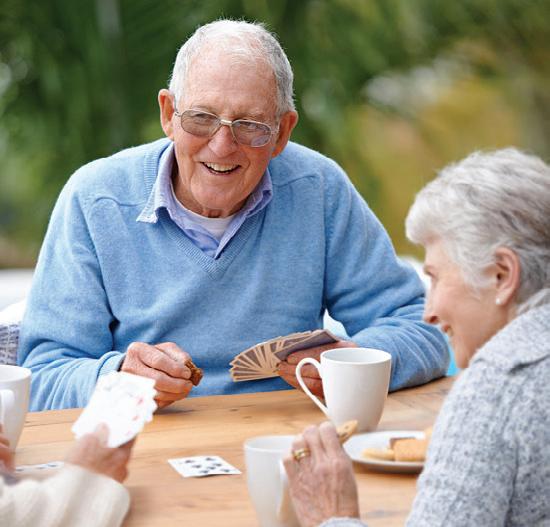

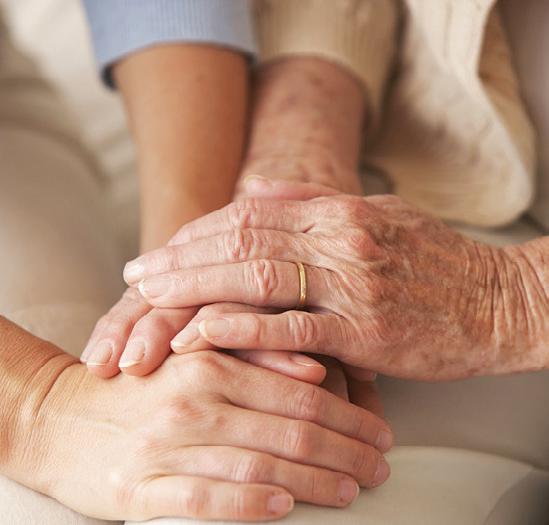






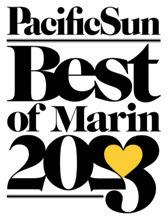

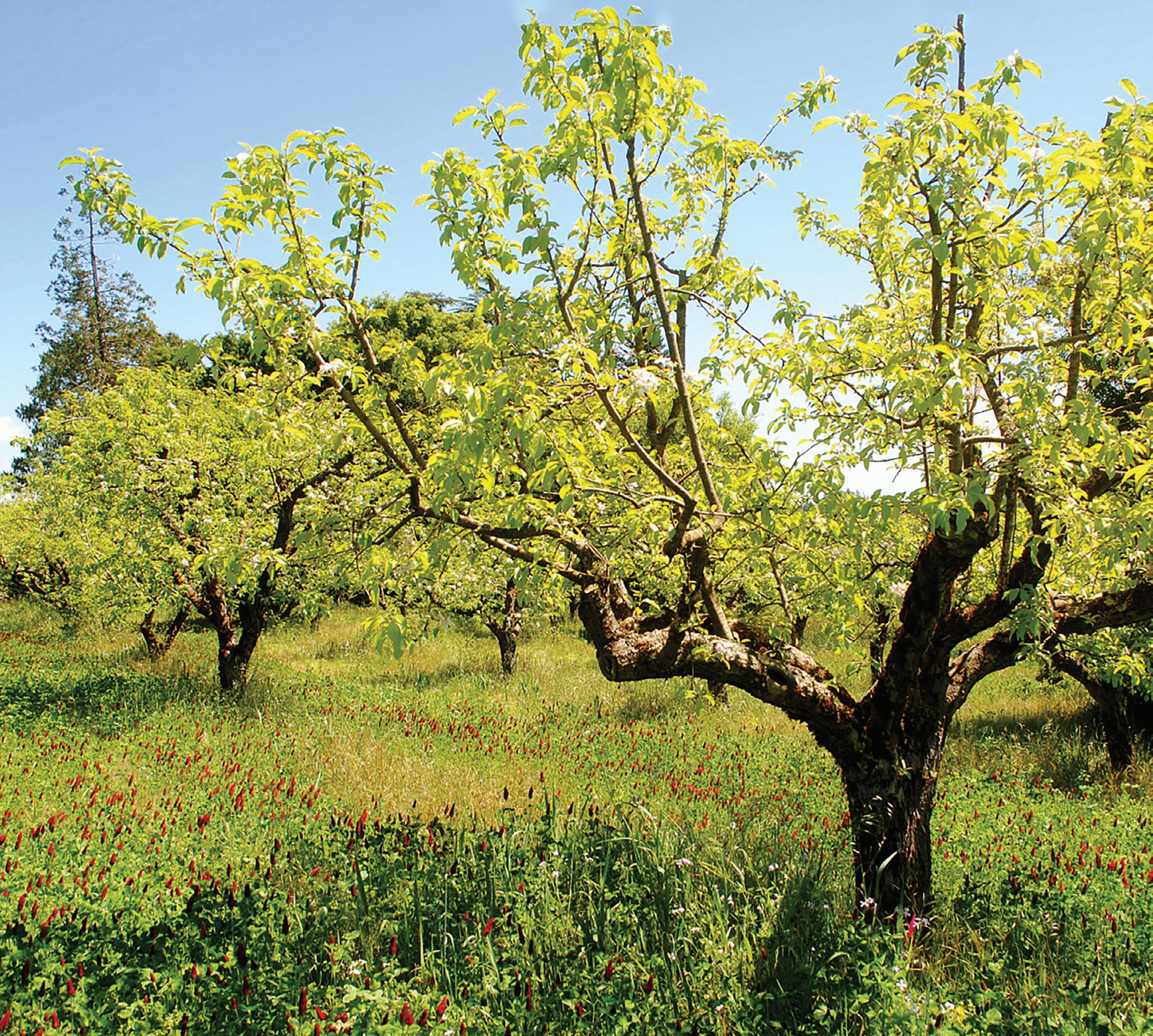

As cliché as it may be to say, the apple does not fall far from the tree when it comes to Sonoma County’s own maker of alcoholic apple beverages: Ethic Cider.
Though this cidery is only a decade or so old, the farm itself is located on a historically apple-laden plot of land that lies nestled deep in the heart of Sonoma County’s agricultural landscape. Ownership of the earth beneath Ethic Cider’s feet may have changed hands in recent years, but some of the orchards’




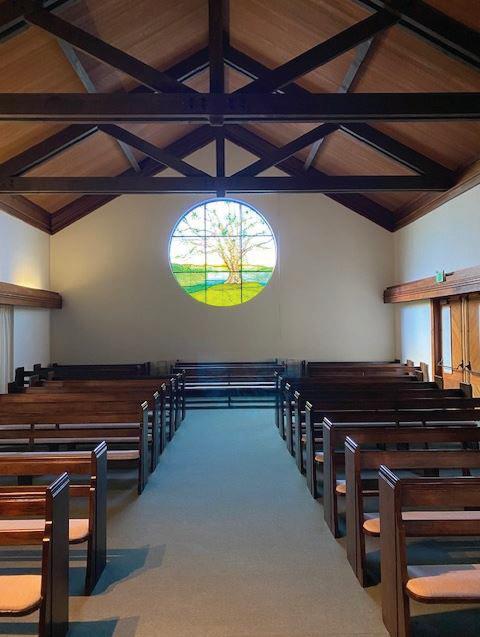


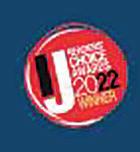




original apple trees remain to this day, planted and producing their fragrant blossoms and delicious fruit year after year after a half-century of careful cultivation.
Sebastopol locals, as well as thirsty transients simply passing through the North Bay on their way somewhere else entirely, may stop by, sip some cider and take a moment to appreciate the serendipitous sale that drew two perfectly suited people to tend to the farm’s roots and encourage new offshoots of growth too.
Those people are Ned and Michelle Lawson, co-owners of Ethic Cider and both East Coast transplants who moved west, met and married—they have since spent their lives together, living out on the central Californian coast between San Francisco and that rural plot of land bordering Santa Rosa’s bustling center.
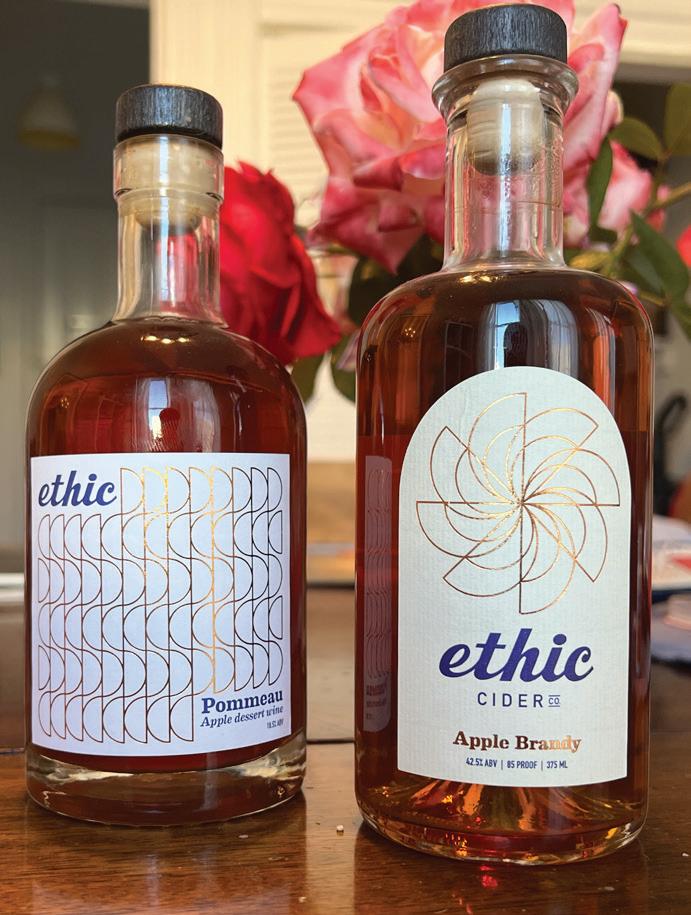
born or raised here, but I’ve been here for 30 years. I’m originally from the East Coast, around New York. And the part I like to bring from my upbringing is my exposure as a kid in upstate New York to apples and orcharding…I remember as a kid eating apples and having apple juice and my dad sneaking off to buy apple cider too.”
“That idea from my childhood is a big part of this romance of apple orchards and, though I wasn’t from a farmer family or anything, I remember it fondly,” continued Ned Lawson. “Before buying the orchard, I was working in the tech industry in the city. My wife, Michelle, had started a [pre] school that is based in nature and meant to connect children to nature. We had all these elements circling when we bought the property which is now the cidery 10 years ago.”
The Bay Area American Dream may very well be seen in this couple’s
“I’m local,” Ned Lawson said. “I wasn’t »»



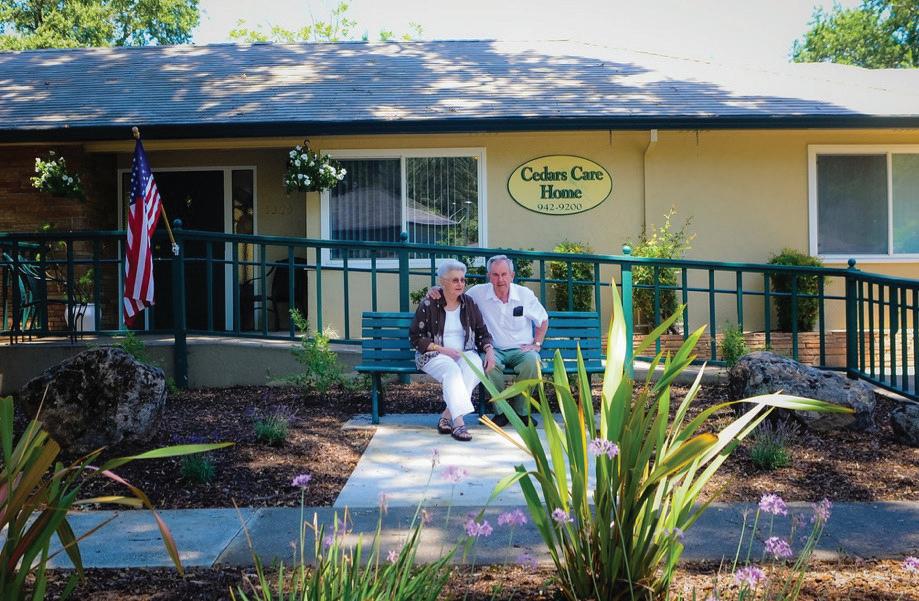

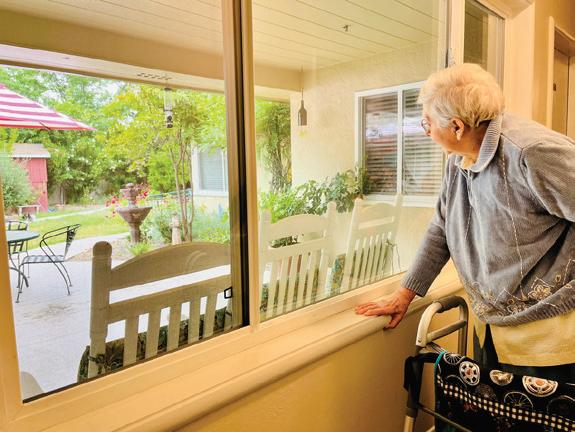
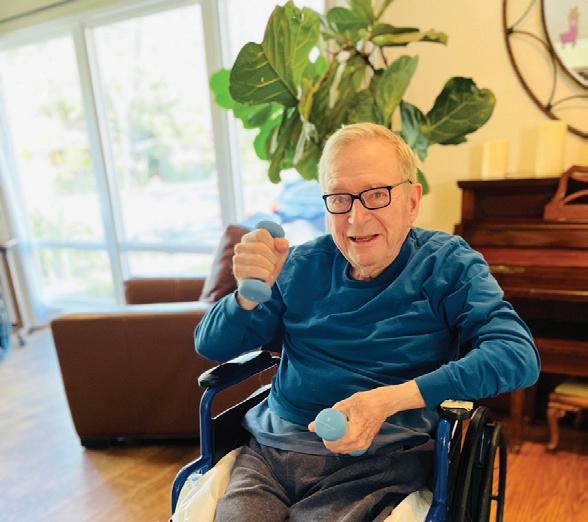
The cider, according to Ned Lawson, was a secondary (almost unexpected) venture born from a single question the couple asked themselves only after buying the property—that question was, amusingly: “What do we do with all these apples?”
personal manifest destiny across all of the United States, a journey that led to San Francisco, careers in technology and children’s enrichment and a culmination that came in the form of a historical plot of land and enough apples to go around—especially with all those extra apple trees they planted.
But when it comes to the Lawsons, it seems as though family, community and children’s enrichment (both their own and others) are the real apple of their eyes—alongside delicious, ethicallyproduced cider, of course.
“We originally bought the land to connect our young children to nature, allowing them over five acres to roam unsupervised on the landscape,” Michelle Lawson said. “This comes from our own close relationship with nature, growing up in rural areas in the ’70s.”
“Over the past 10 years, we’ve expanded to connect with others from around the Bay Area, giving them a chance to experience where their food comes from and enjoy the amazing landscape of our farm,” added Michelle Lawson.
The cider, according to Ned Lawson, was a secondary (almost unexpected) venture born from a single question the couple asked themselves only after buying the property—that question was, amusingly: “What do we do with all these apples?”
As readers may expect by now, the answer to that question was naturally answered in one word: “cider.” Given
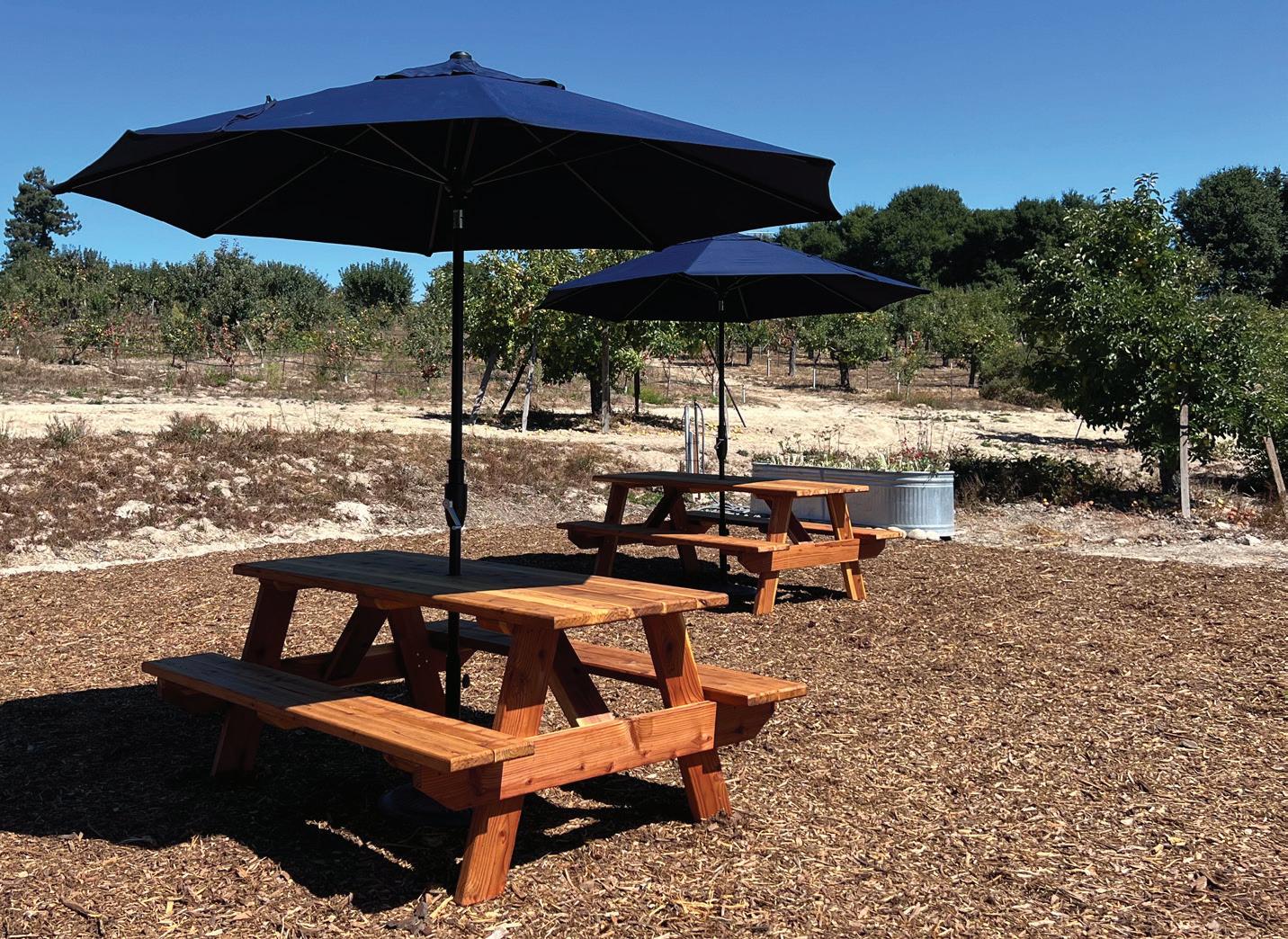
more words, the phrase, “When life gives you apples, make alcohol,” springs to mind.
But there’s a whole lot more to Ethic Cider than the boozy beverages it produces. In fact, the Lawsons seem to place community involvement, agricultural advancement and experiencing the enrichment of nature in an equally important place as the cider itself.
“Culturally, we wanted to know how we could do something with this land

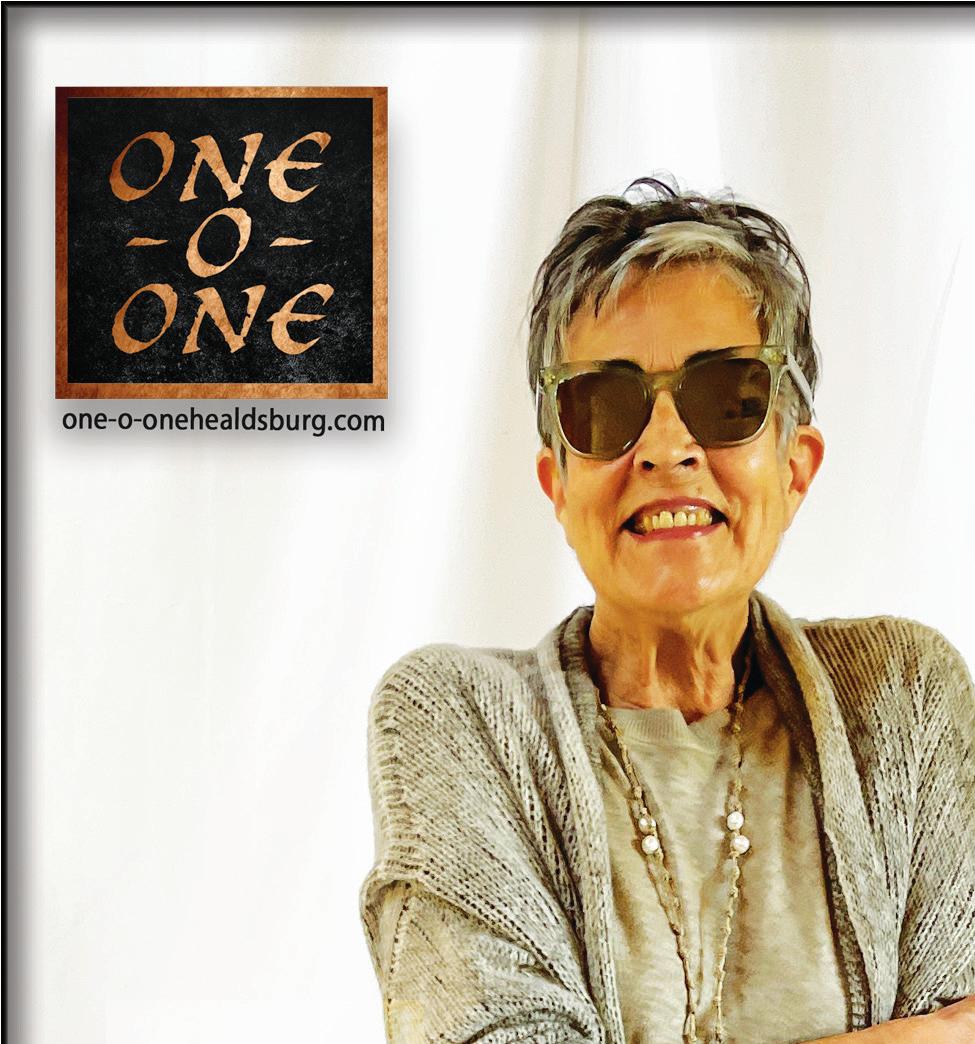
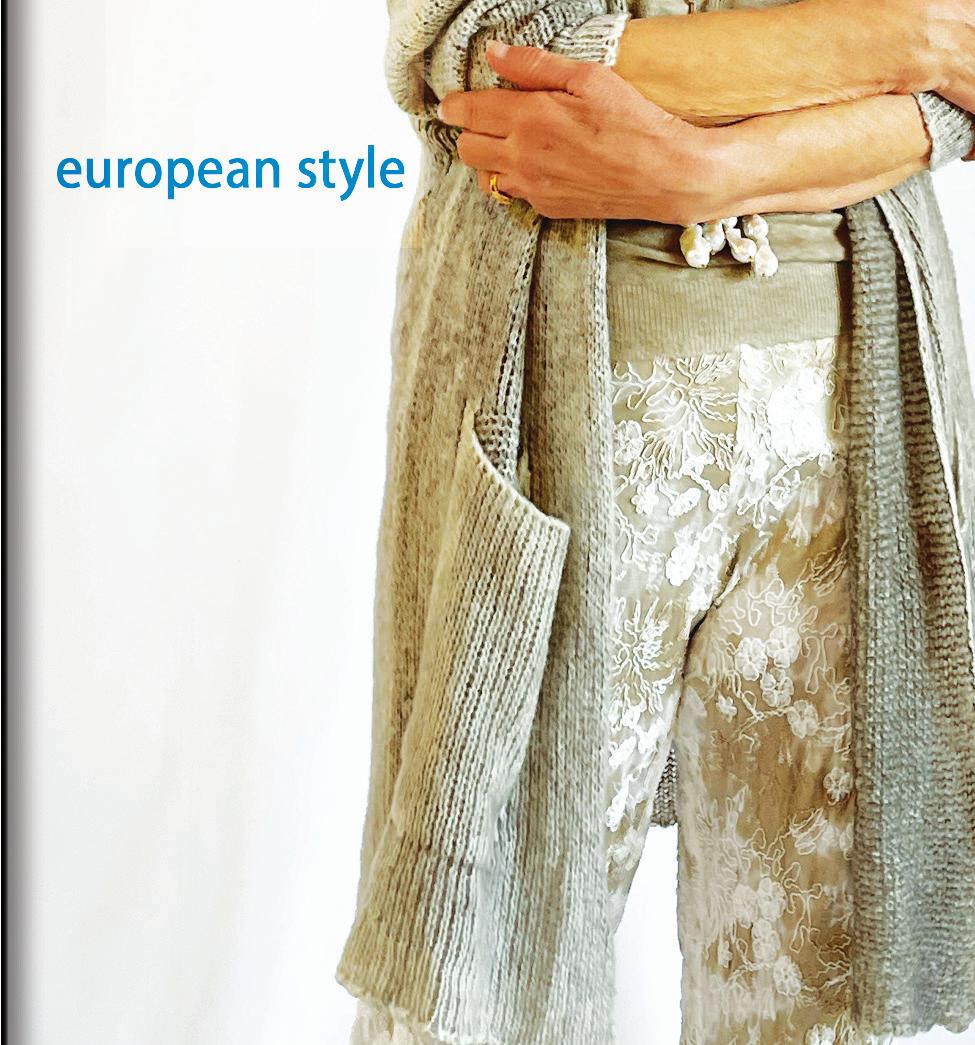
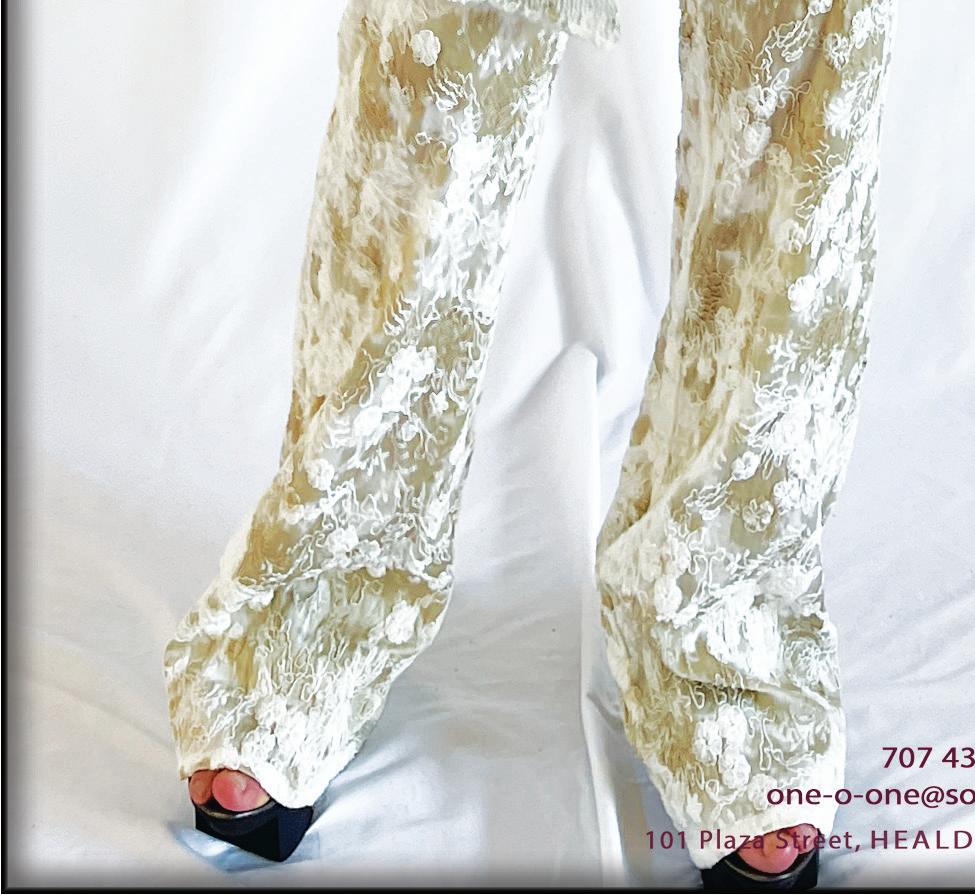

MPT, PhD, OCS, APA Sports & MSK Physio., DNSP, FAAOMPT
Now serving Napa and St. Helena
In addition to our regular physiotherapy services, we are now able to obtain objective measurements of:
MOTION
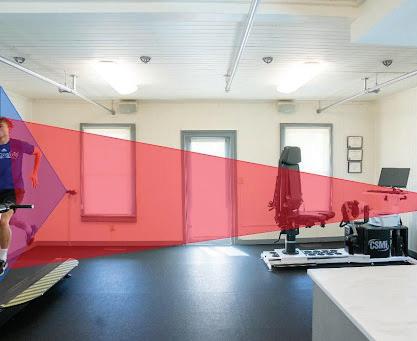
MUSCLE ACTIVATION

PRESSURE FORCE
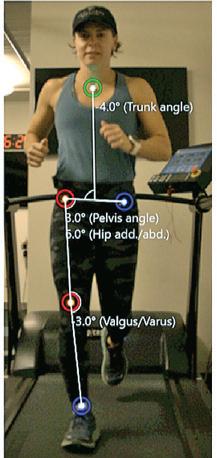

MUSCLE PERFORMANCE
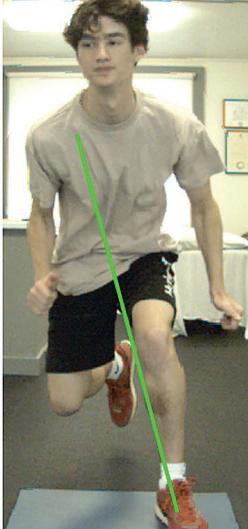
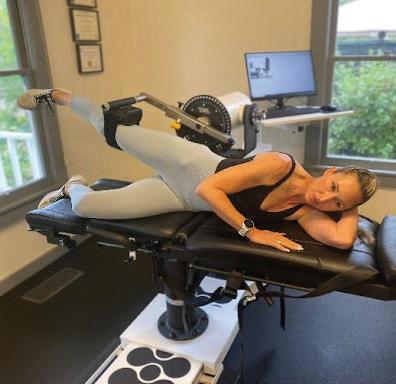
The biomechanics lab is specifically engineered for
• Gait Analysis
• Running Analysis
• Cycling Analysis
• Injury Risk Screening
• Return to Sport Evaluation
• Return to Sport / Injury Prevention Training
If you are having difficulty with walking, running or returning to sport, contact SOP for your biomechanical examination.
To schedule an appointment please contact Dr. Wood directly by phone or text @ 707.812.5066
For more information visit sportsandorthophysio.net

that feeds the community’s love of agriculture,” Ned Lawson explained. “What we inherited was a rundown orchard, and we wanted to see what we could do, agriculturally speaking, with this beautiful piece of land.”
“There was this vision my wife had to give land and presence to our children and others,” Ned Lawson continued. “A place to provide this unstructured discovery that young children and adults should do, out roaming the land, inquisitive and tuned in.”
The core values at the center of Ethic Cider’s apple industry are deeply rooted not only in personal homesteading and providing opportunities for children to connect with nature, but in the locally beloved concept of sustainable, ethical and conscientious agriculture as well.
Dwight Harrington is the cidermaker and orchardist at Ethic Cider. The combined efforts and expertise of Harrington and the Lawsons are responsible for the delicious ciders coming out of this Sonoma County farm.
“Dwight is the cidermaker with us now,” Ned Lawson explained. “He started four years ago for us, but before that, he ran another, similar place in Healdsburg and a very avant garde place up in Portland before that as well.”
With Harrington’s expertise on the team, the beverages produced at Ethic Cider became some sort of bottled liquid gold. These drinks are sold all across California, and each is a wholly unique celebration of the orchard’s wide variety of apples both old and new, blended and singular and as apples-lutely delicious as the last.
“When we chose the name ‘Ethic,’ I felt the burden of it a little bit,” Ned Lawson concluded. “But it came to be more about the approach and the land and wanting to do right by it. We’re not perfect by any means, but we’re fully organic and regenerative and, at the end of the day, we just wanted to make sure we think about how to bring ethics into making cider and into our community.”
Ethic Cider is located at 8490 Occidental Rd. in Sebastopol. Visiting hours are Friday, Saturday and Sunday from noon until 5pm or, preferably, by appointment (especially for larger parties, events outside the usual hours of operation or otherwise special occasions). For more information about Ethic Cider, its products or upcoming events, visit the website at ethicciders.com or call 707.329.6659.






















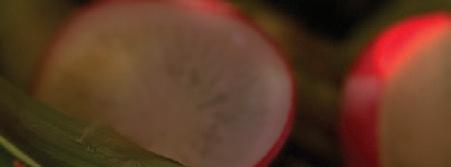








































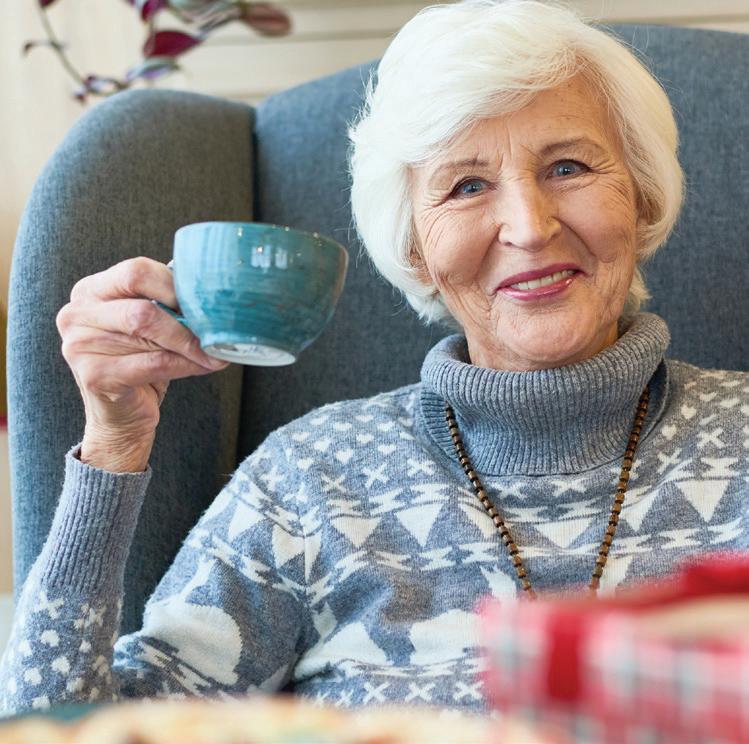
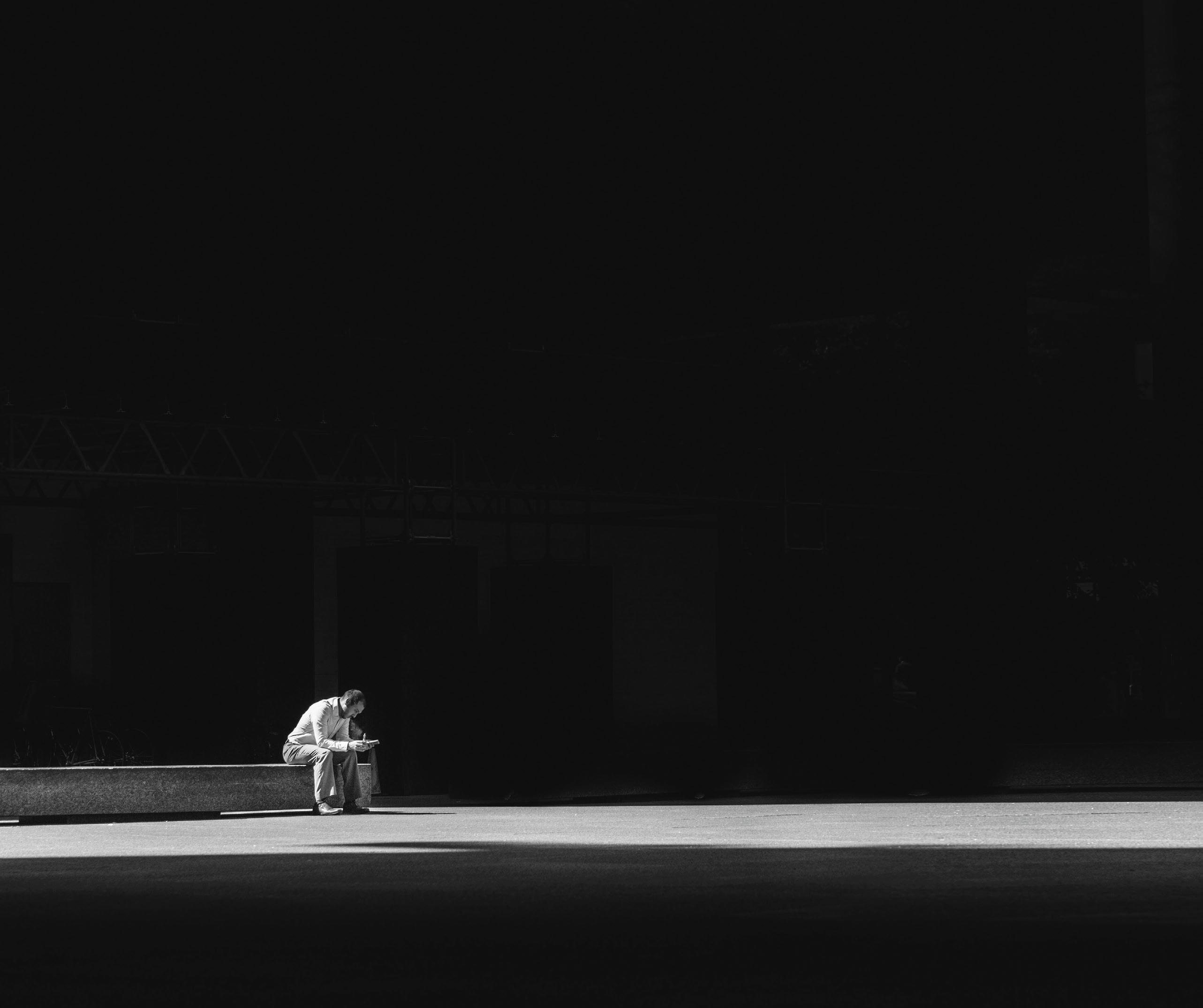
Lately, I’ve been asking family, friends and even near-strangers if they’ve ever experienced loneliness and if the pandemic made it worse. If one is seeking a universal “yes,” those are the perfect questions to ask. I did not take joy in our shared suffering, but did begin to think maybe I wasn’t neurotic—not to mention immunocompromised and fantasizing life would be different. »»






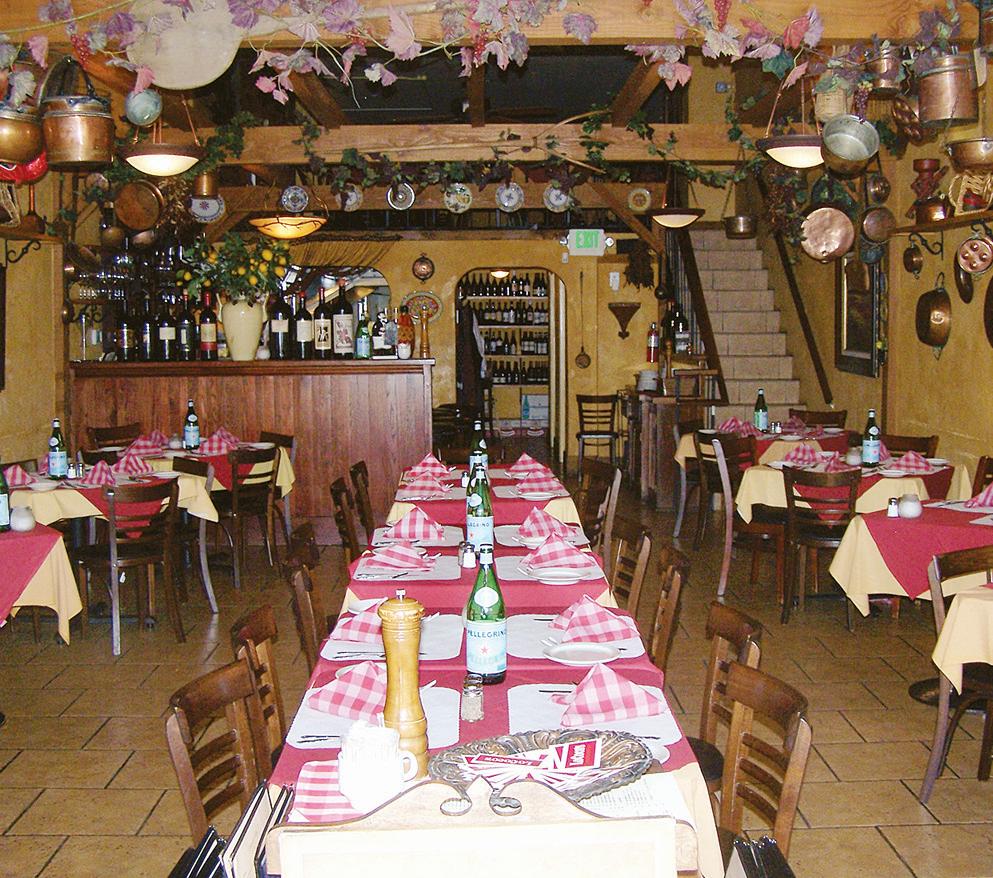
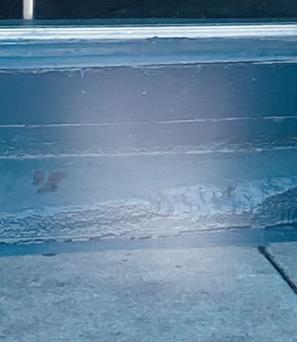
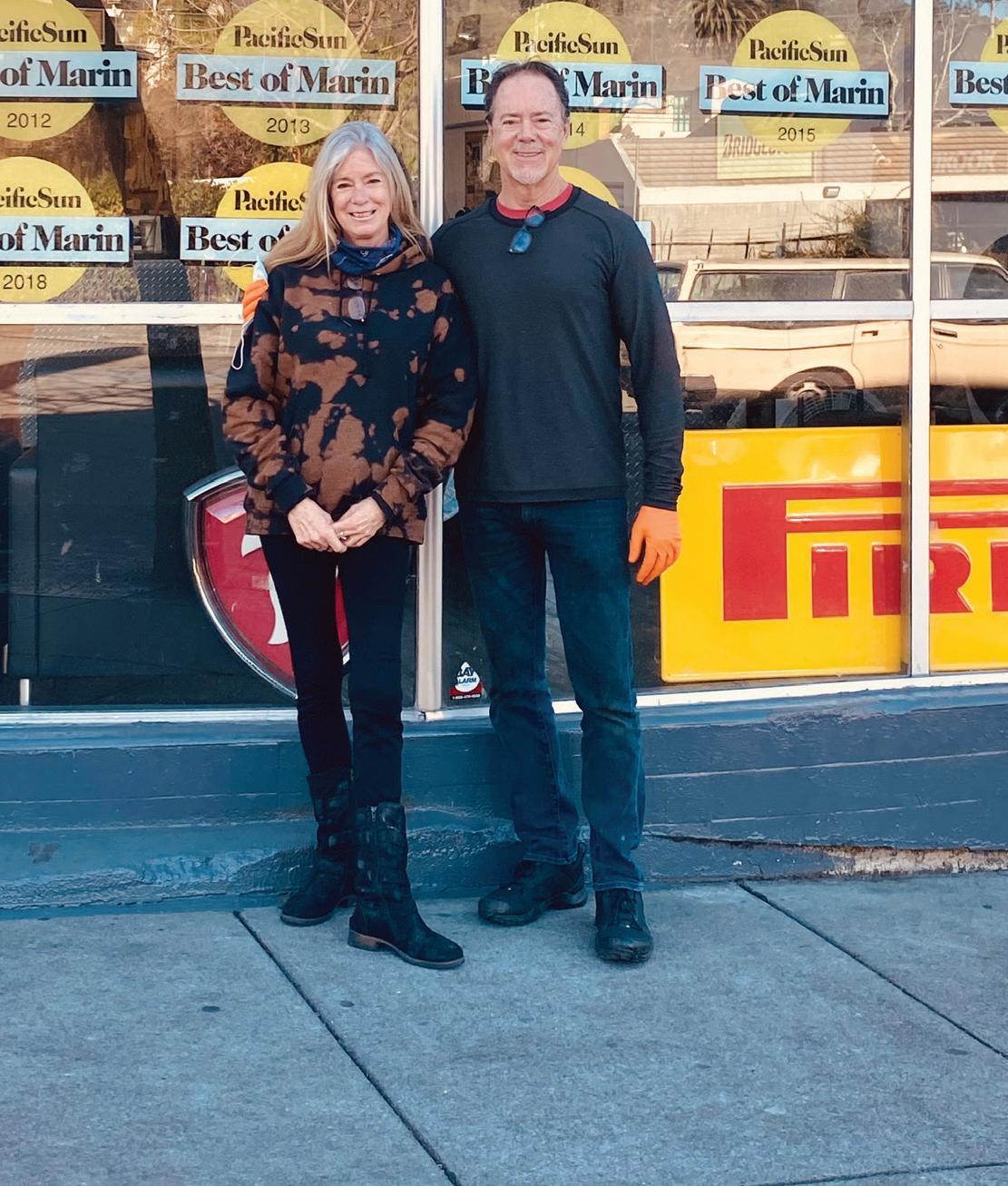





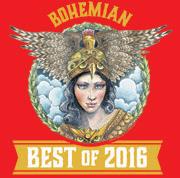

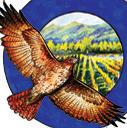
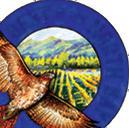

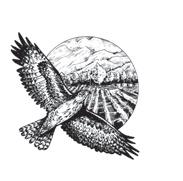




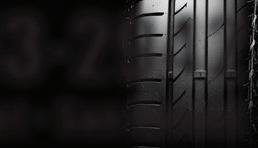

When people are socially disconnected, their risk of anxiety and depression increases; so does their risk of heart disease (29%), dementia (50%) and stroke (32%).
«« And then, listening to the nightly news, I heard United States Surgeon General Dr. Vivek Murthy referring to our loneliness as a “national epidemic” and felt even more validated. Murthy even issued an 85-page advisory. In an April 2023 essay in The New York Times, he wrote, “At any moment, about one out of every two Americans is experiencing measurable levels of loneliness.”
My interest was extended by a journalist’s high propensity for curiosity. I began to research, which happens to be one way I handled my ongoing loneliness. Learning more about the topic and finding ways to reverse the negative flow of loneliness led to solutions that worked for me. It filled the time and connected me to my close friends and family, the local community and people across the country. Here’s some of what I learned, followed by suggestions that might help combat it.
The common constellation of emotions that constitute loneliness results from a broad spectrum of causes, including actual, imagined, self-inflicted, systemic, economic—and other accelerants, such as the prevalence of technology and social media—that can lead to isolation. In contemporary culture, we refer to it on the downside as “otherness,” “lacking a tribe,” “lonely” or simply “being too much alone.”
On the opposite end of the spectrum, someone choosing to spend considerable time in solitude is embraced as an intentional nomad, free-spirit or admired as someone seeking enlightenment through spiritual retreat or solo mindfulness practice. When the separation is physical, a person deliberately living
in isolated surroundings is respected as an esoteric, devout environmentalist or nature-lover who makes a home in a remote, less-developed location.
Actual loneliness is different from being alone. The former is a disconnection that can be experienced even in a crowd; the latter is a lifestyle or episodic choice. A person in a rewarding intimate partnership, who has or doesn’t feel the need for hundreds of social media “friends,” might suffer from feeling disconnected from larger society.
Alternatively, a highly social person who volunteers or carries a prominent profile in a community might grieve over the lack of a romantic partner or a best friend. Loneliness is complex, and the only thing easy to tickle out is that almost everyone has firsthand knowledge and has experienced it in some way.
One of the traps of the condition, particularly if combined with shame, is the tendency for a lonely person to catastrophize. “I’m the only person in the history of mankind who has ever felt this isolated,” one might think. The sufferer and other people might be quick to pathologize the situation, with comments such as, “I/You must have a mental health condition. I/You should see a therapist.”
Self-rebuke and well-intended but misguided encouragement—chin up, just get over it, keep a journal, get a dog, “think of all the people who have it worse than you do,”—intensify the verbal whipping and actually might increase isolation under the crescendo of verbal abuse.
The problem sweeps thousands of individuals into therapists’ offices. Having
already hoarded and exhausted self-help books and online apps, having searched the Internet for “my people,” they are desperate for a cure or even momentary relief. Loneliness experienced before, during and especially following the coronavirus pandemic is not just bandied about in social psychology research labs and think tanks, but has captured America’s political gaze. Experts say it’s among topics discussed at every level of public health.
Make no mistake; it’s fair for the surgeon general and others along with him to suggest America has a loneliness pandemic. With distressing evidence of increased suicides, death rates and serious health risks from conditions related to the mental and physical symptoms experts associate with loneliness, their concern is backed up by real data, not just anecdotal.
“When people are socially disconnected, their risk of anxiety and depression increases,” writes Murthy. “So does their risk of heart disease (29%), dementia (50%) and stroke (32%). The increased risk of premature death associated with social disconnection is comparable to smoking daily and maybe even greater than the risk associated with obesity.”
In his report, Murthy stated that loneliness was most pronounced in young people aged 15-24 who had 70% less in-person social interaction with their friends. A 2022 paper from Johns Hopkins University found that socially isolated older adults also had a higher chance of developing dementia than their peers.
A July 14 article from The Conversation, a national nonprofit, independent news organization, reported more »»
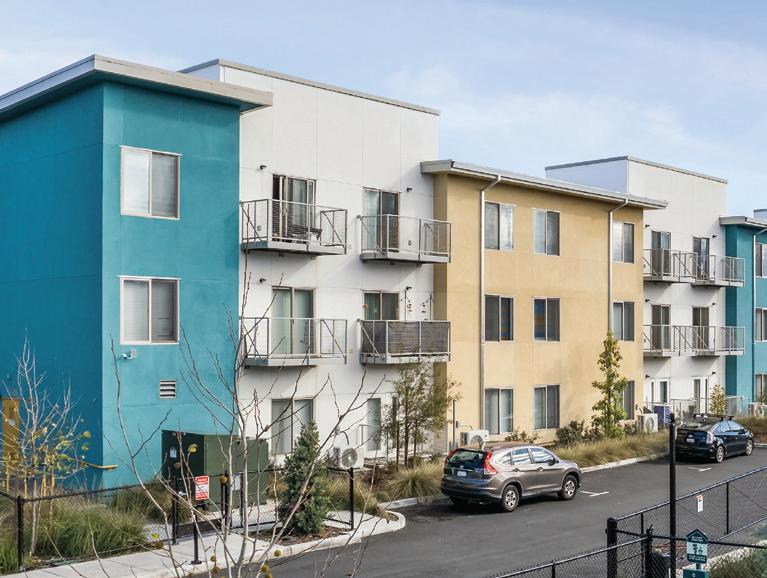


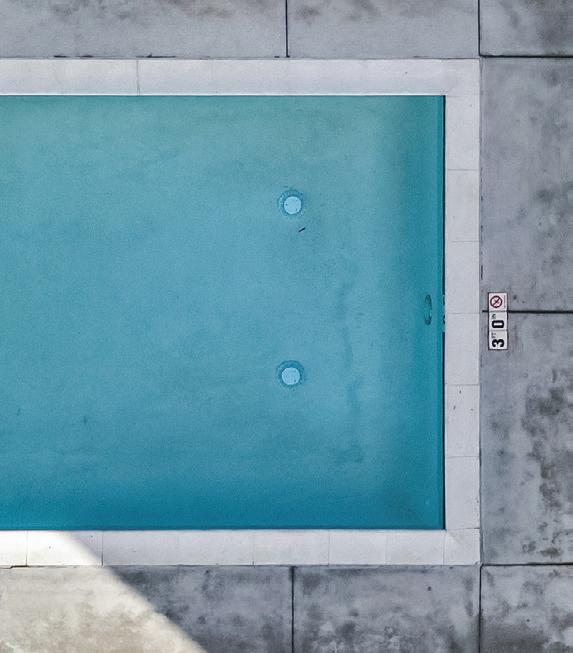









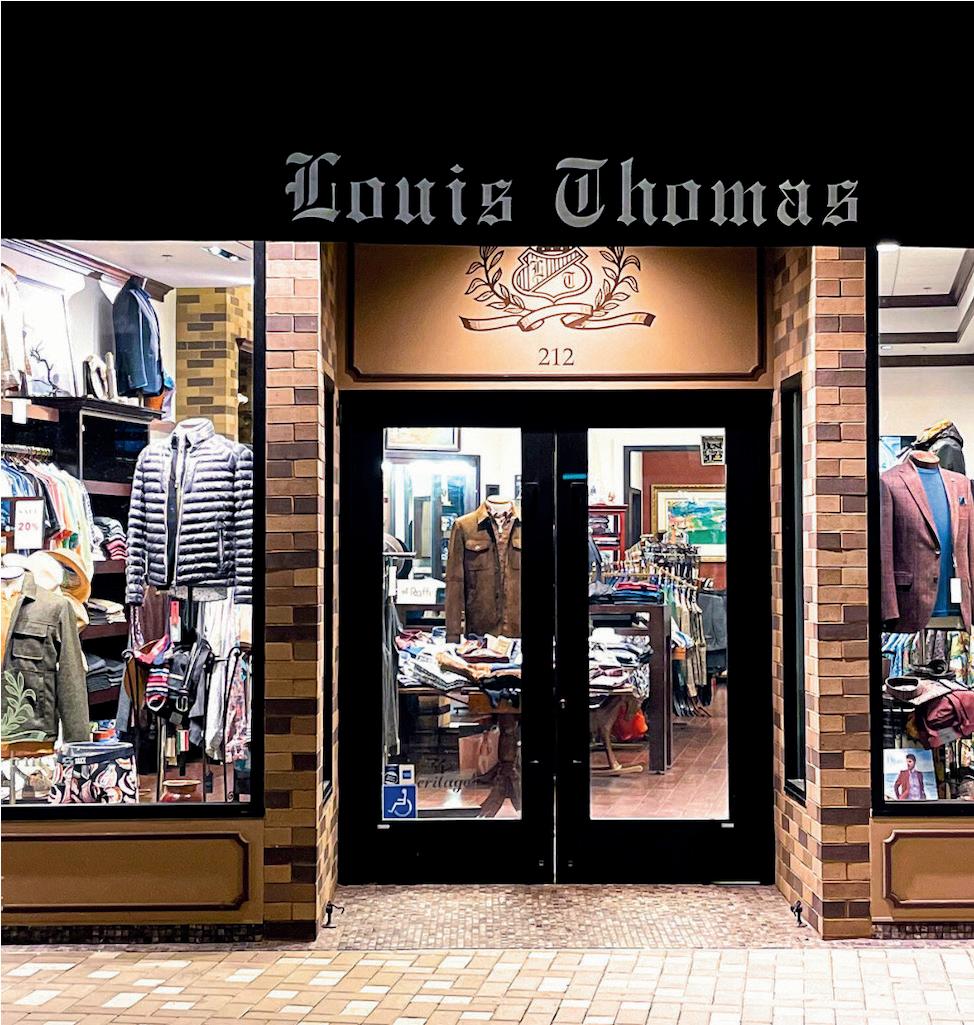

Actual loneliness is different from being alone. The former is a disconnection that can be experienced even in a crowd; the latter is a lifestyle or episodic choice.
— Dr. Vivek Murthy, U.S. surgeon general
««
research-backed facts: A 2021 survey by Cigna showed nearly one in six Americans reported feeling lonely or isolated. Young adults in the survey were nearly twice as likely as people over age 65 to report feeling lonely or isolated.
Similar conditions were reported by 75% of Hispanics, 68% of Black or AfricanAmerican people, and the majority of lower-income respondents and single parents. Severe physical and mental health conditions—obesity, dementia, heart disease, stroke, diabetes, depression, anxiety and other chronic illnesses—lead to shortened lifespans and poor quality of life.
To address the issue of loneliness and isolation following the pandemic, the National Institutes of Health launched the Researching Covid to Enhance Recovery (RECOVER) initiative. With funds allocated by Congress, NIMH sought to determine the medical aftereffects specific to Covid. But with no guarantee of the limited money continuing, actual progress to deliver results and actual solutions remains indeterminate.
Notably for those people searching for a glimmer of light in a dark tunnel, there’s some grassroots relief found in groups such as Seniors Taking Action, Lady Gaga’s Born This Way Foundation, the Troops First Foundation for military veterans, and numerous organizations dedicated to providing a social connection for LGBTQ+, BIPOC and other under-supported communities. A popular course offered as a podcast at Yale University, “The Happiness Lab,” has host Dr. Laurie Santos introducing scientific research that shows what does and does not make people happy (or less lonely).
Books are a sturdy resource for
people hoping to combat loneliness:
In 2020, Murthy authored Together, a book encouraging people to focus on relationships and life purpose more than career achievements and productivity. A book by Andy Field, Encounterism: The Neglected Joys of Being in Person, makes the argument that after almost three years of Covid-dictated isolation, we need to inhabit shared spaces.
The London-based artist creates projects inviting people to explore inperson experiences as common as going to a hair salon, striking up a conversation with—instead of ignoring—the homeless person one passes on their daily commutes, or sharing an umbrella with a stranger or neighbor during a rainstorm.
Experts point to larger changes or foundational pillars society must use as we begin to address loneliness. The first step includes acknowledging everyone at some point in life will experience loneliness. But accepting the condition does not mean being passive.
Secondary steps might be to strengthen the social infrastructure of community connections by striking up conversations with people met in parks, the grocery store, public libraries and similar places—or joining an advocacy group that seeks things such as paid family leave, accessible technology for all, or improved funding and services to address negative health consequences related to loneliness.
Casual friendships might be improved by choosing to engage in person by using public transportation, joining a fitness club, attending local meetings instead of remotely on Zoom and participating in groups
interested in the same things. Intimate relationships require a larger investment of time, so considering in advance exactly what is desired—is it a lover, a travel companion, a formal relationship?—helps determine the paths to pursue.
Many of us might think these are fine ideas, but won’t produce immediate effects. Those who are lonely want to know what can be done now.
Following are a few isolation-busting suggestions.
Membership in a club is but one of the many ways people can find or explore new relationships and social connections. Free or low-cost options include recreation departments in local cities and towns, neighborhood walking and book clubs, and faith communities offering a wide variety of interfaith, non-denominational and religious institutions.
Public libraries in the post-pandemic world have returned to plentiful programming, with weekly events, workshops, classes and special events designed for patrons of all ages. Art centers and community choirs and orchestras appeal to people interested or accomplished in the arts; volunteer ushering or docent duties serve individuals with connections to theater, museums and history.
People in the UK and Australia have established specially designated “chat benches” where people can meet for community conversations—maybe start one in a neighborhood? A person might also look online for Civic Suds, a group that meets in laundromats.

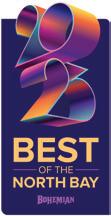




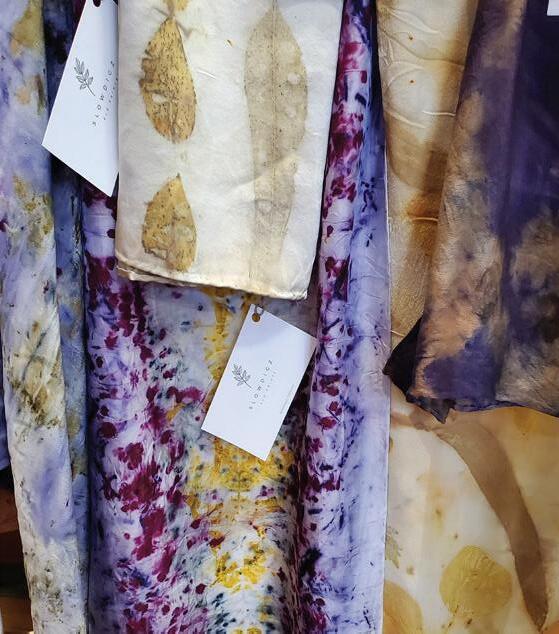
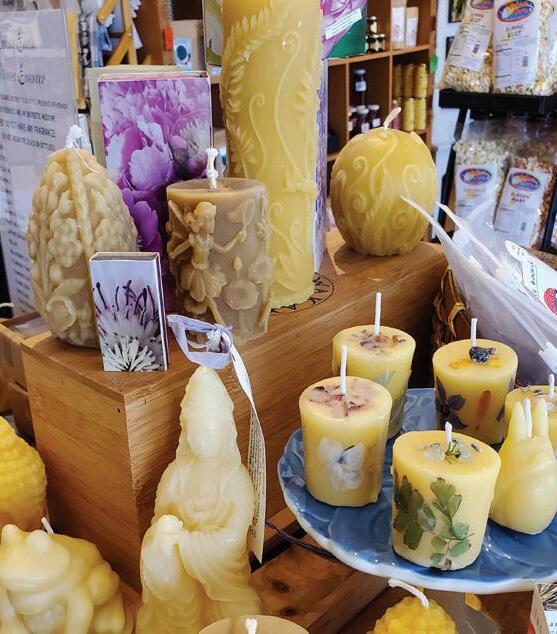


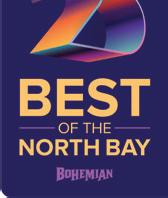
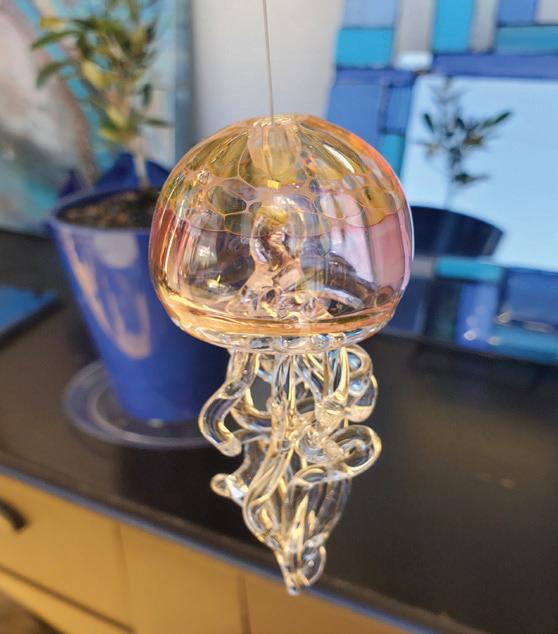

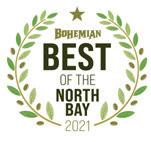




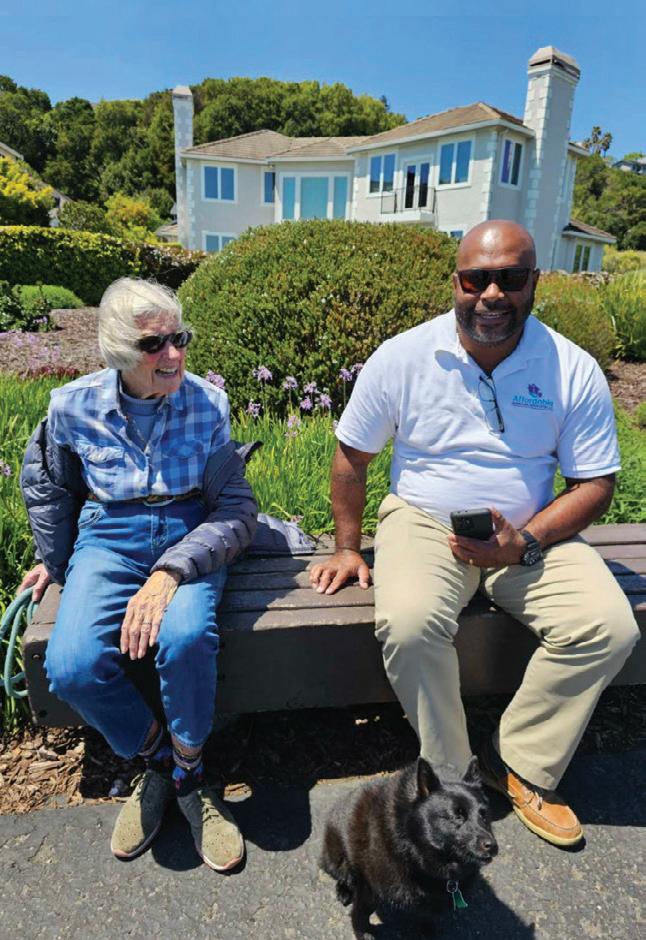

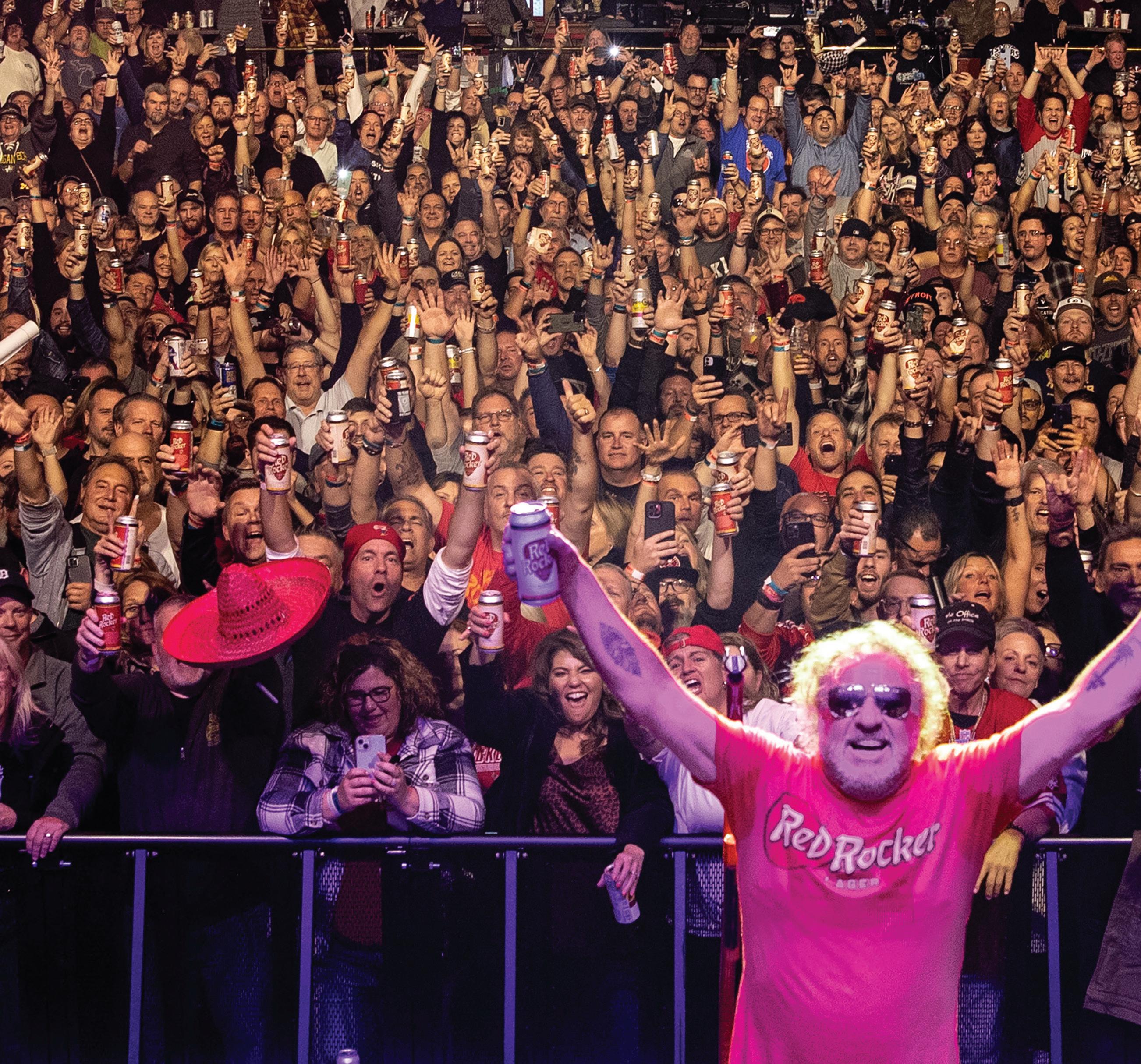
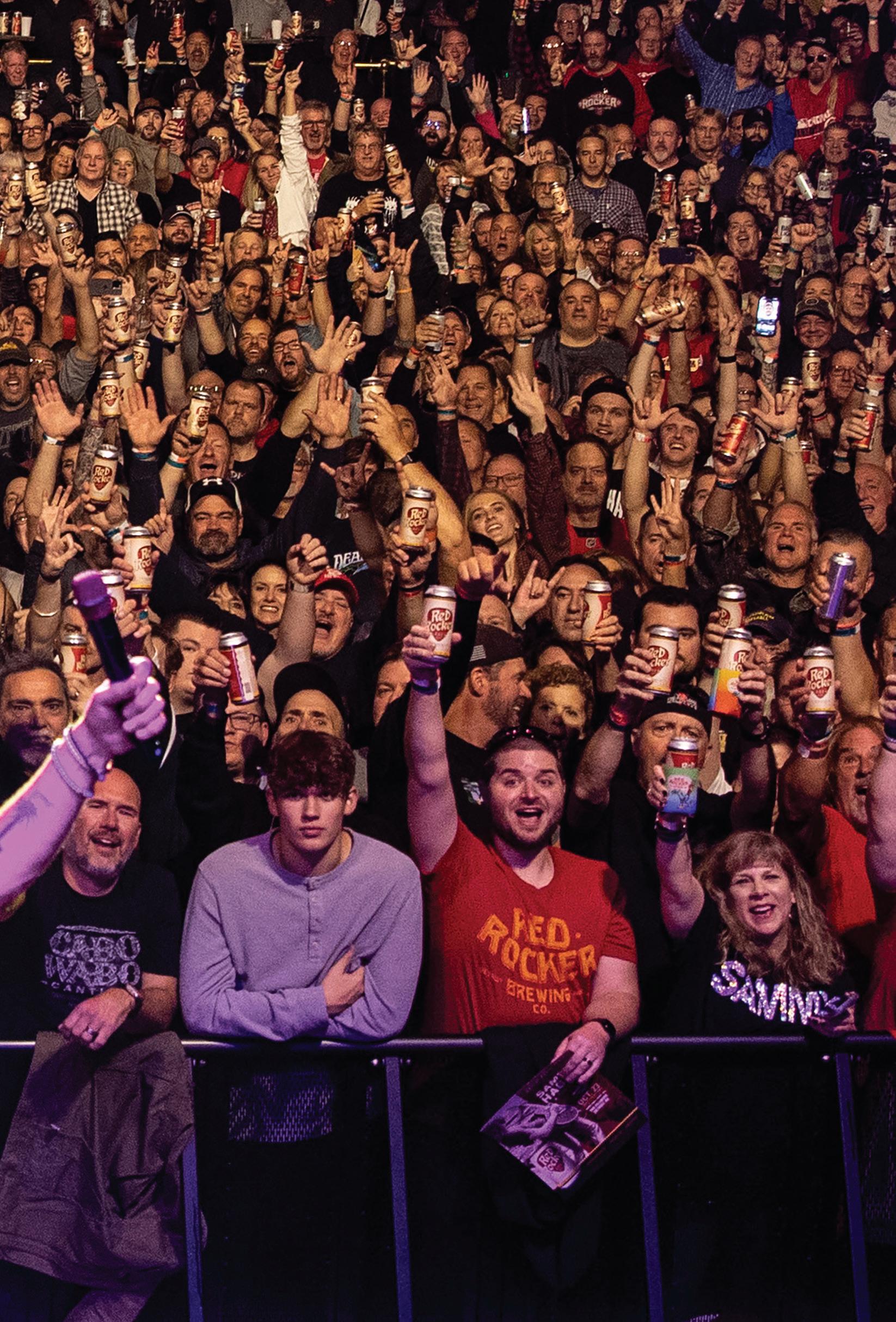
Sammy Hagar likes his booze. Before George Clooney, Kendall Jenner and Brian Cranston launched their tequila companies, the former Van Halen singer and Marin County resident was in Mexico, searching for farmers to make a 100% agave tequila.
He started a cantina there in the ’90s, spurring the creation of Cabo Wabo tequila,
the first of four of his alcohol companies. He’s also authored a book on cocktails and owns a wine collection with over 10,000 bottles
Hagar likes cars too. He wrote an anthem for gearheads, “I Can’t Drive 55,” and estimates he’s owned 40 Ferraris in his life. This year, his Leferarri is expected to be auctioned for over $5 million.
And finally, Hagar likes to rock ’n’ roll. Known as the Red Rocker, he’s a legend in the heavy metal world. The 1980s
wouldn’t be the same without his gravelly, vibrato-filled vocals and high-energy performances. Today, he hosts a weekly radio show dedicated to rock, and despite being 76 years old, plans to tour this summer with his new band, The Circle.
The Mill Valley party animal possesses Keith Richards’ longevity and Jimmy Buffet’s entrepreneurial savvy. He also donates millions to child food relief, and hangs out with Warren Buffet and Guy Fieri. If life were a video game, Hagar seems to have found all the cheat codes, though this wasn’t always the case.
“You’re going to move to San Francisco, and you’re going to make it. I see your name in lights all over the world.” These words, uttered by a psychic woman in Yucaipa, California, arguably launched Sammy Hagar’s career. It was 1970, and Hagar had just fathered his first child. His wife was having mental breakdowns, and they were living on food stamps in San Bernardino.
Not knowing where his next meal would come from wasn’t new for Hagar. Born in Salinas, his family lived in a labor camp before moving to Fontana, where he would spend the bulk of his childhood. His father, tormented by demons picked up as a paratrooper in World War II, was a raging alcoholic whose benders left the family impoverished. His mother, married at 15, worked through the night doing laundry and drove the kids after school to pick fruit, anything to help pay the bills. When dad got too drunk and came home wild-eyed, they’d grab their belongings and go sleep in the orange groves.
As fate would have it, on June 5, 1964, the Rolling Stones came to San Bernardino. It was their first concert in America, and a high schooler named Sammy Hagar snuck in.
“That night, I knew I wanted to be a musician,” he wrote in his autobiography. The experience prompted Hagar to beg his mother for a Sears catalog guitar, the birth of decades of red-haired head-banging.
Now in his 20s, pulling up to a tract house in Yucaipa to find the elderly Italian soothsayer, Hagar was unsure. His father had just died on the street from alcoholism, and Hagar had already served time in jail for marijuana possession. He was only playing small gigs at the time, and driving trucks

to make ends meet. But after his meeting with the psychic, Hagar began to drive eight hours every week to places like Peppermint Tree and Wharf Rat in San Francisco. Shortly after, he moved his young family to San Francisco.
There he would team up with Ronnie Montrose, becoming an original member of the eponymously named band, Montrose. After being fired on tour in 1975, Hagar enjoyed a prominent solo career with songs like “I Can’t Drive 55” and “There’s Only One Way to Rock,” enabling him to buy a house on Mount Tam. It was during that time, the late ’70s and early ’80s, that Hagar began experimenting in the business world, starting with building apartments in Fontana.
When the fire department told him they needed to install fire hydrants for every property, he decided to install sprinklers instead. That turned into American Fire Chief Inc., the second largest home firesprinkler company in the world. He created his own travel agency to avoid paying a fortune to travel agents while on tour, and opened a mountain bike shop, Sausalito Cyclery, a business he claims at one point amassed $4 million a year in sales.
In 1985, in the midst of enjoying business success and considering retirement from rock, Eddie Van Halen called. David Lee Roth had just left the band, and they were looking for a new singer to save their future. Despite a tumultuous relationship with the
band, and mixed feelings from some fans who began to call it “Van Hagar,” they turned Hagar into a bona fide rock star. He was now selling out stadiums and making multiple platinum albums.
Starting in 1983, Hagar began visiting Cabo, Mexico, at the time a dirt road town with one hotel. One morning, after watching a drunk local stumble home, he was inspired to write the lyrics for “Cabo Wabo,” which was eventually recorded on OU812, Van Halen’s 8th studio album. It would also be the name of Hagar’s second stint in the business world, this time a tequila bar. In 1990, Cabo Wabo Cantina was founded by Hagar with members of Van Halen as partners.
It was initially a failure, causing internal strife with the band that led to the other members backing out. But as the town became more popular, so did the cantina. After Hagar left Van Halen in 1996, he was able to promote the cantina with his new band, The Wabos. The bar is the origin of Hagar’s alcohol business and the tropical, boozing lifestyle that has become his brand. It was the first of 11 restaurants Hagar now owns, and spurred the creation of Cabo Wabo Tequila, a business he sold to the Campari group for $80 million in 2007, under the agreement he’d stay out of the alcohol business for the next 10 years.
In 2017, after the non-compete clause expired, Hagar bolted out of the gate by founding Santo Spirits, a mezcal company with Maroon 5 singer Adam Levine and chef Guy Fieri. Since then, he’s created Sammy’s Beach Bar Rum with Rick Springfield and Red Rocker Brewing Co.
In his autobiography, Hagar doesn’t hold back about his acquaintance with the sex, drugs and alcohol that accompany the life of a Van Halen frontperson. He’s honest about how the lifestyle has contributed to his shortcomings as a husband, father and musician. But through it all, his experiences as a child kept him relatively tame when it comes to mind-altering substances, saving him from the fate of many of his colleagues.
“I’ve never been to rehab, never had to go to rehab. I never woke up in the morning saying, ‘I need a drink. I’ve got the shakes,’” says Hagar.
Hagar’s knack for moderation has allowed him to amass a net worth of $150 million while continuing to appear 10 years younger than he is.
At the same time, his financial success allows him to continue making music comfortably. His bands, Chickenfoot, the Wabos and the Circle, all enjoy the luxury of big-time bands—private jets.
